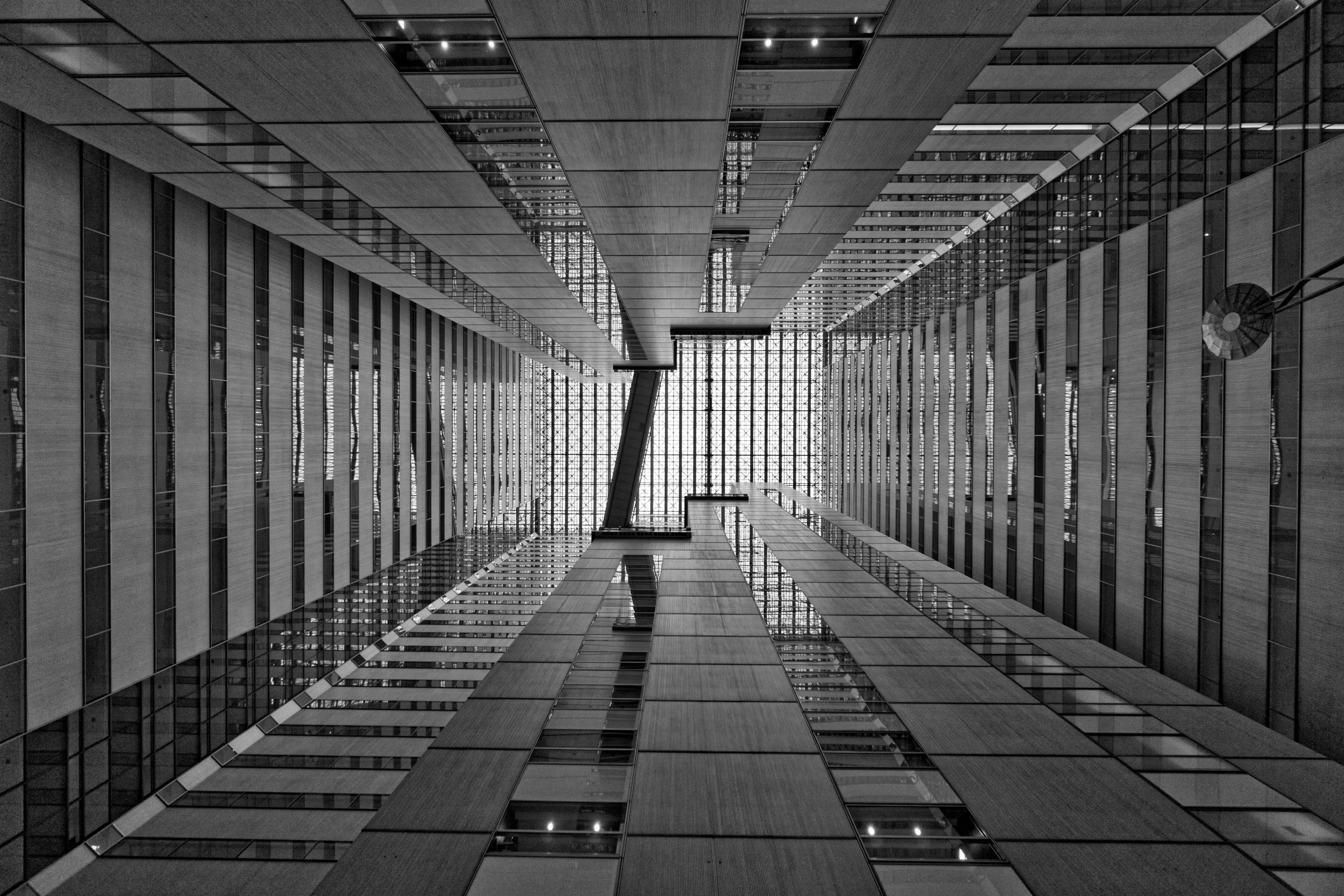
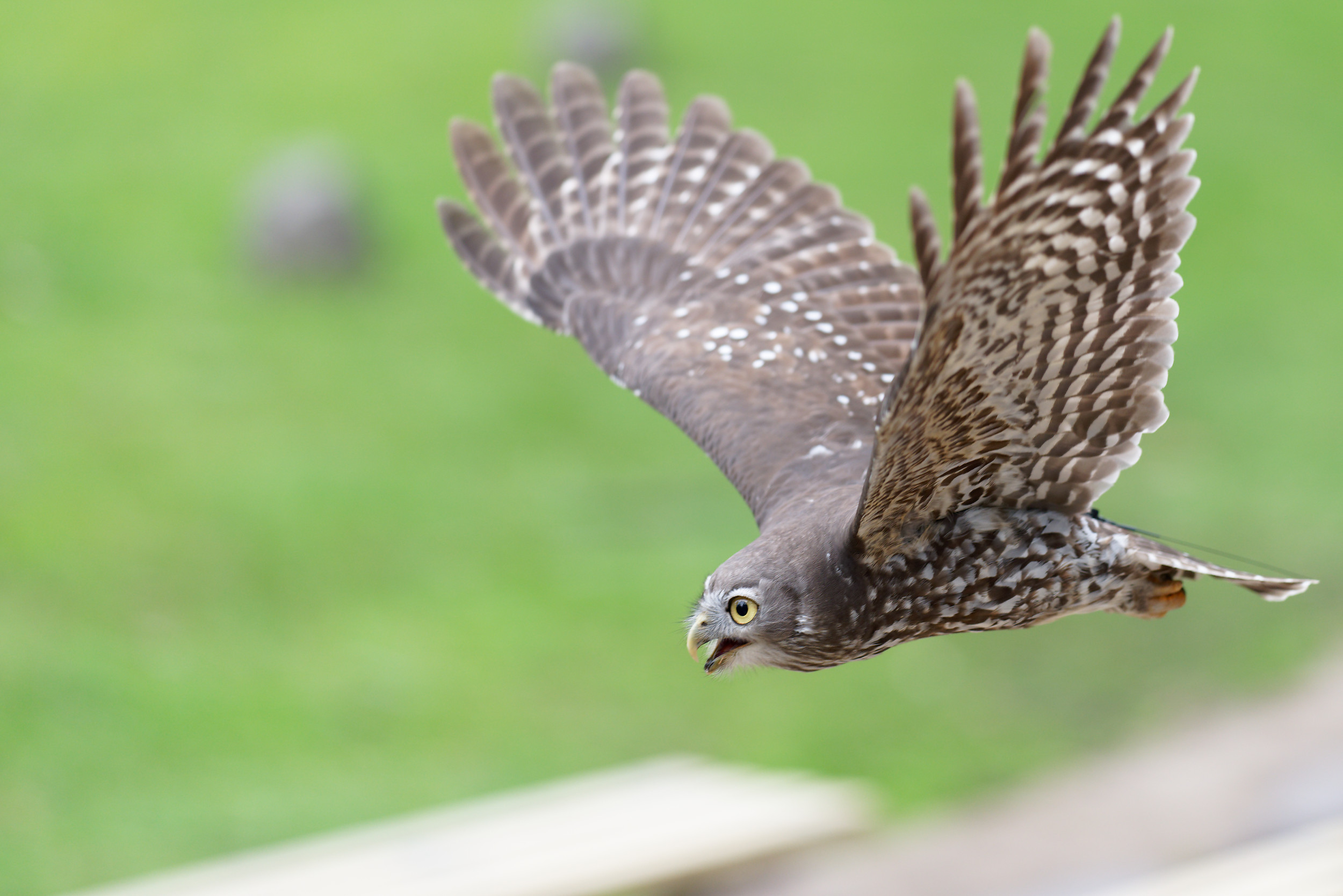 A barking owl - don't duck!
A barking owl - don't duck! 
When a barking owl is flying overhead, don't duck!
Read article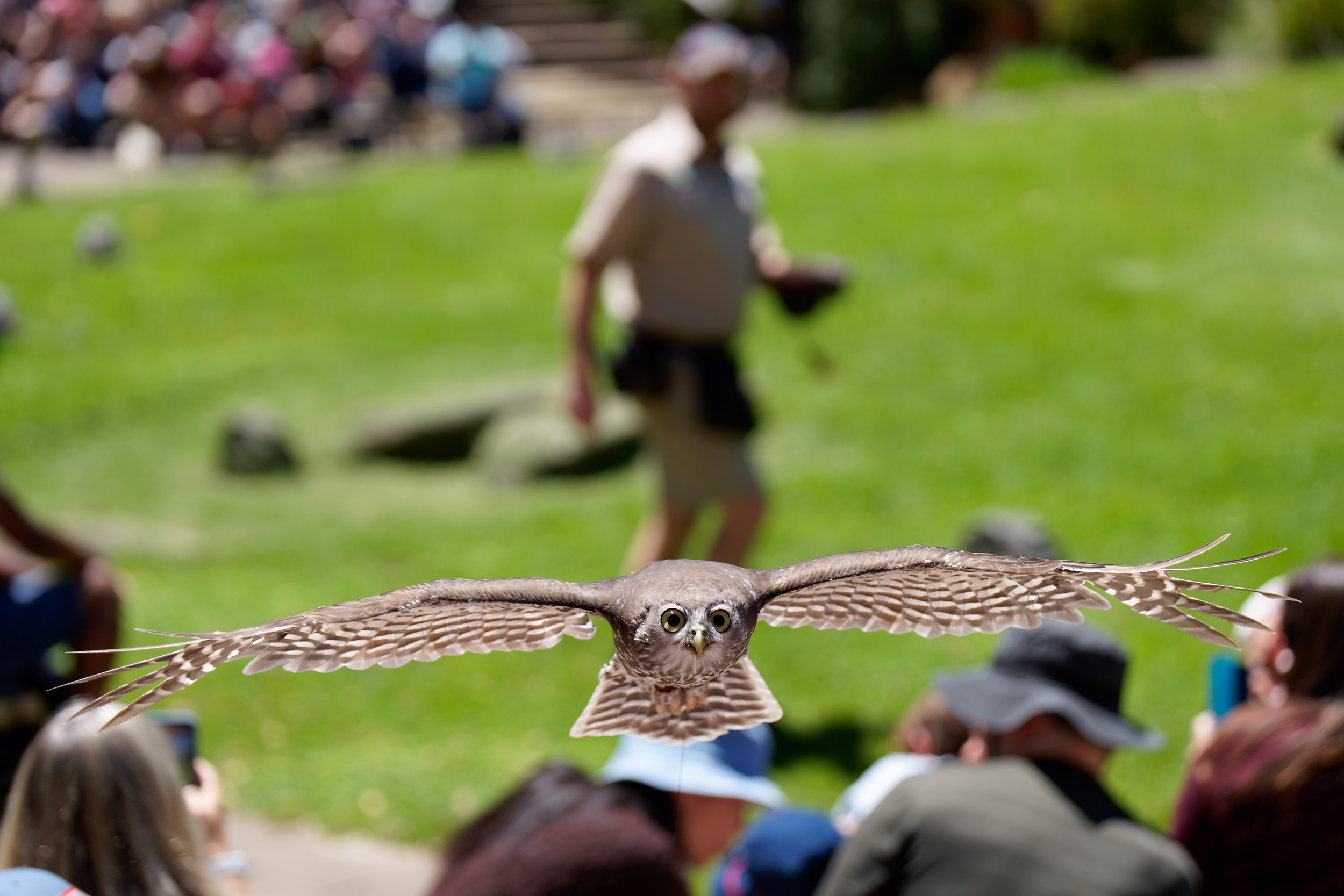 A barking owl in flight - straight at me!
A barking owl in flight - straight at me! 
I'm ready for my close-up Mr de Mille.
Read article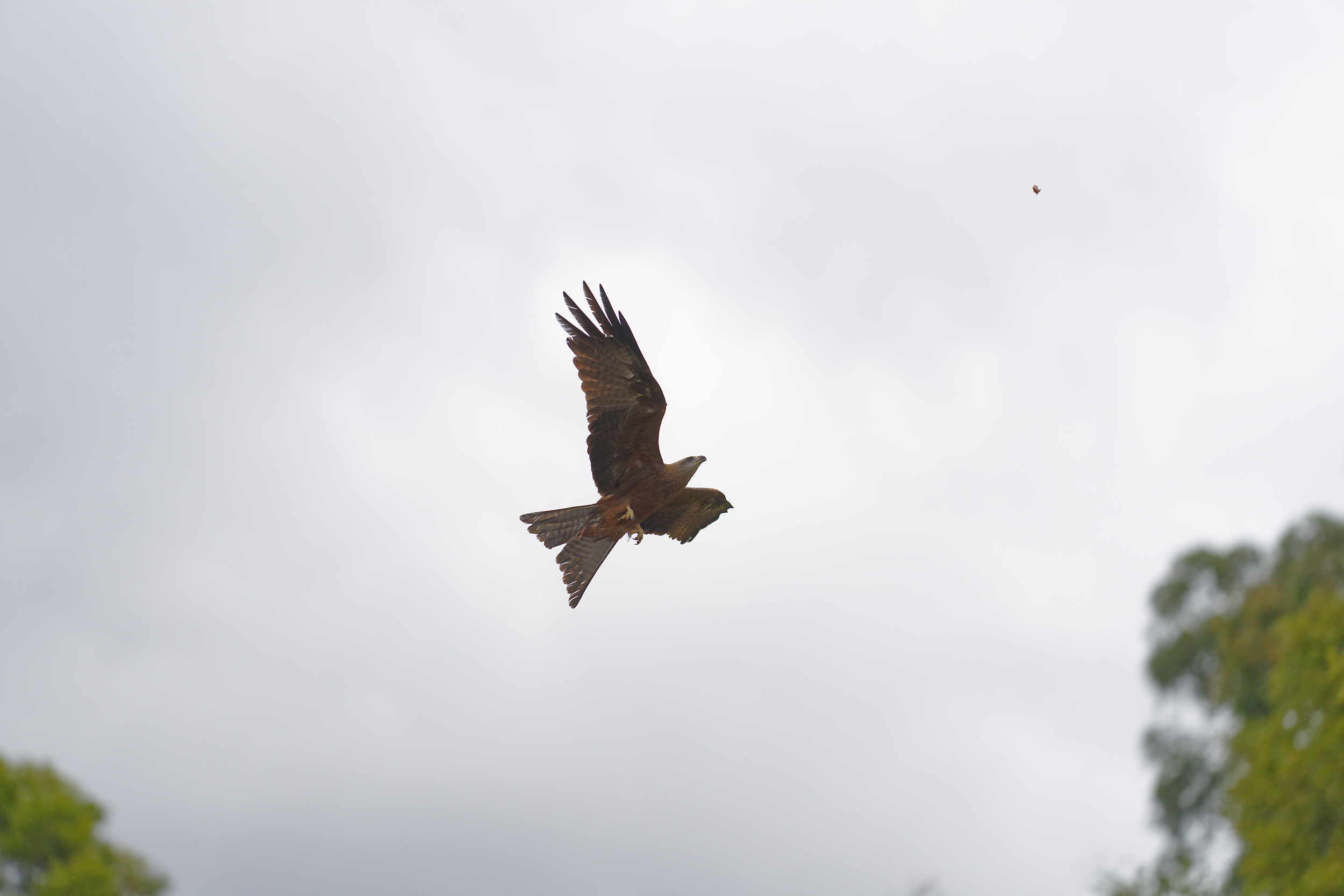 A fraction of a second
A fraction of a second 
How a raptor makes a capture
Read article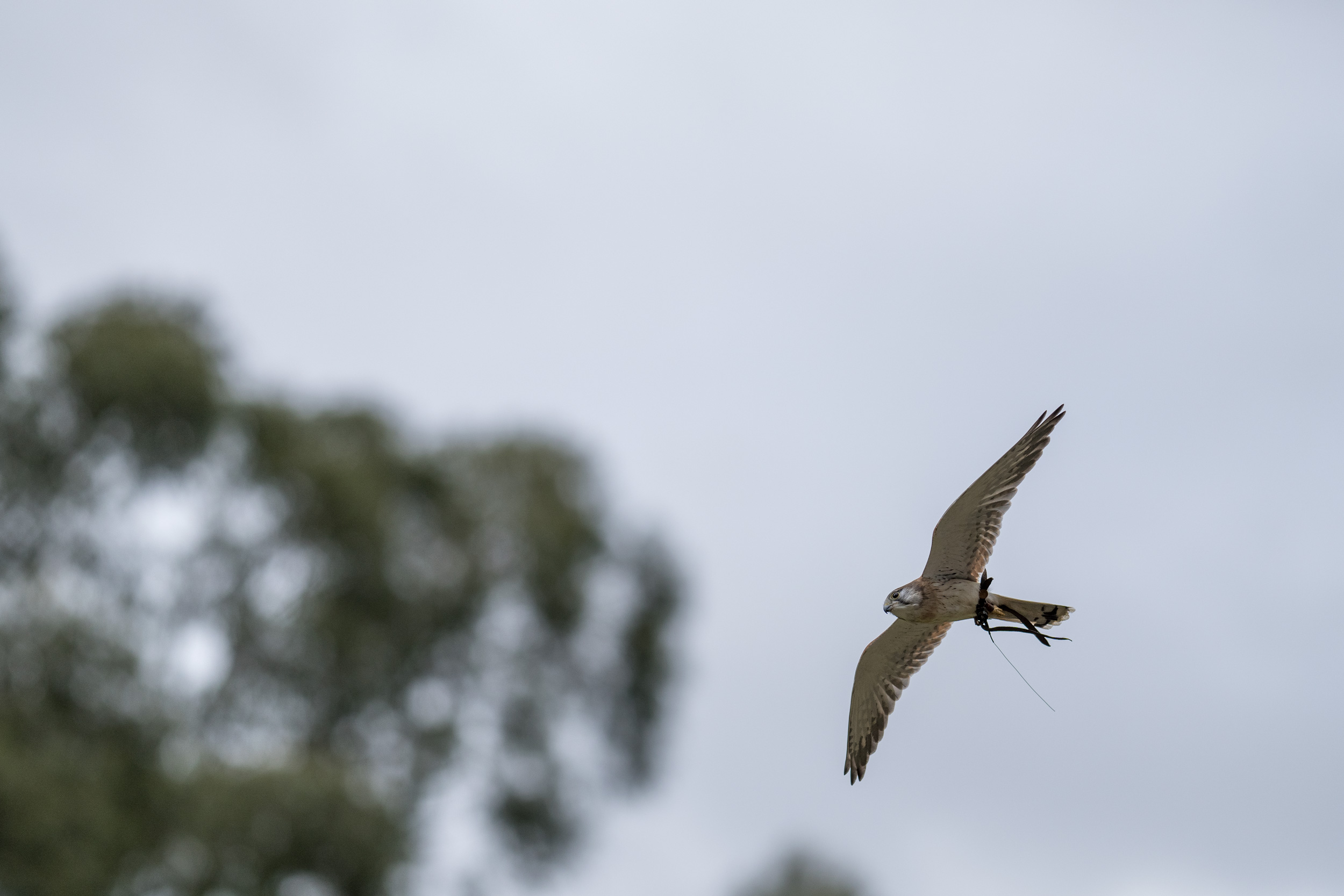 A nankeen kestrel in flight
A nankeen kestrel in flight 
Small and fast, this is a hard bird to photograph!
Read article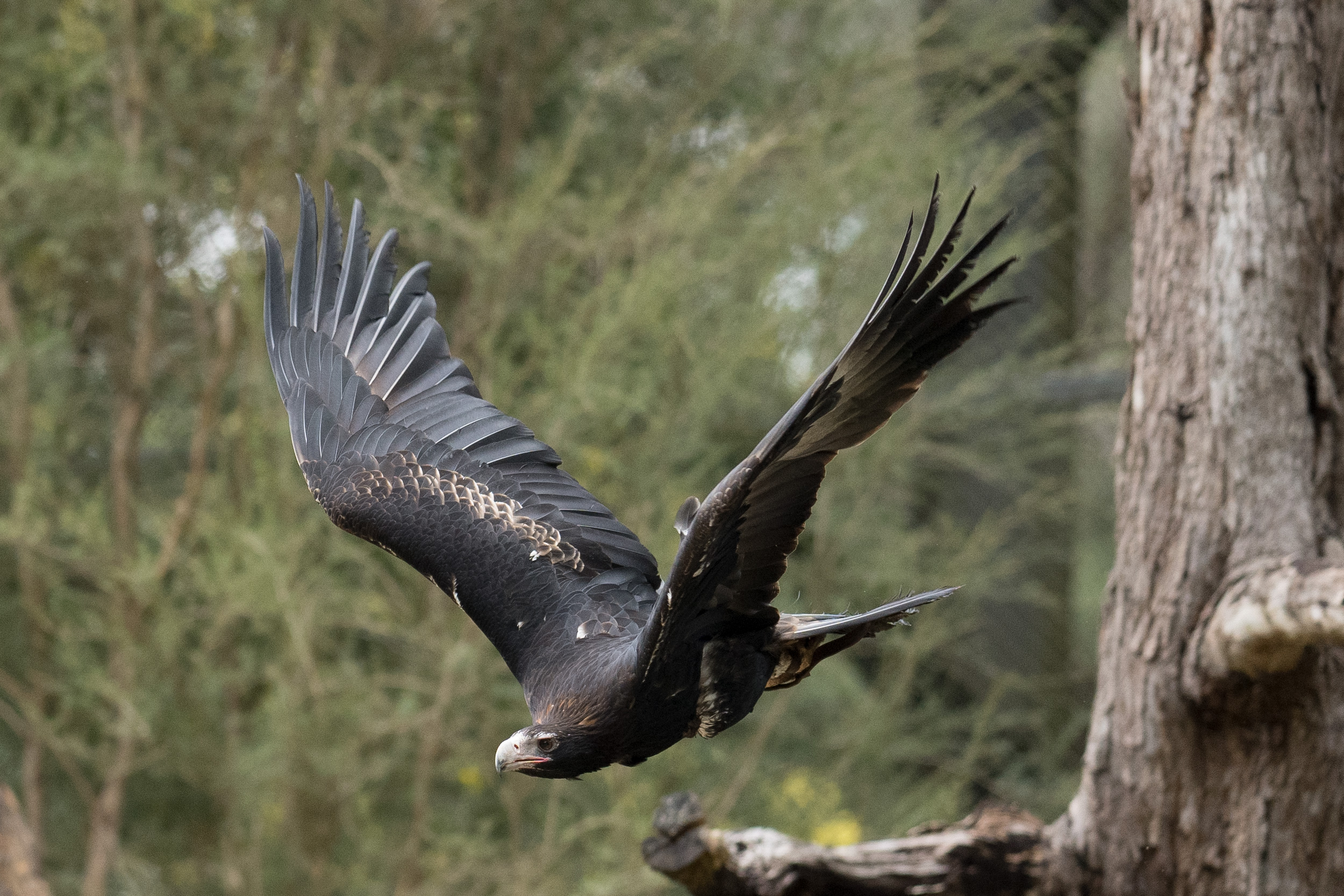 A wedge-tail eagle in flight
A wedge-tail eagle in flight 
The largest eagle in Australia is the wedge-tail eagle.
Read article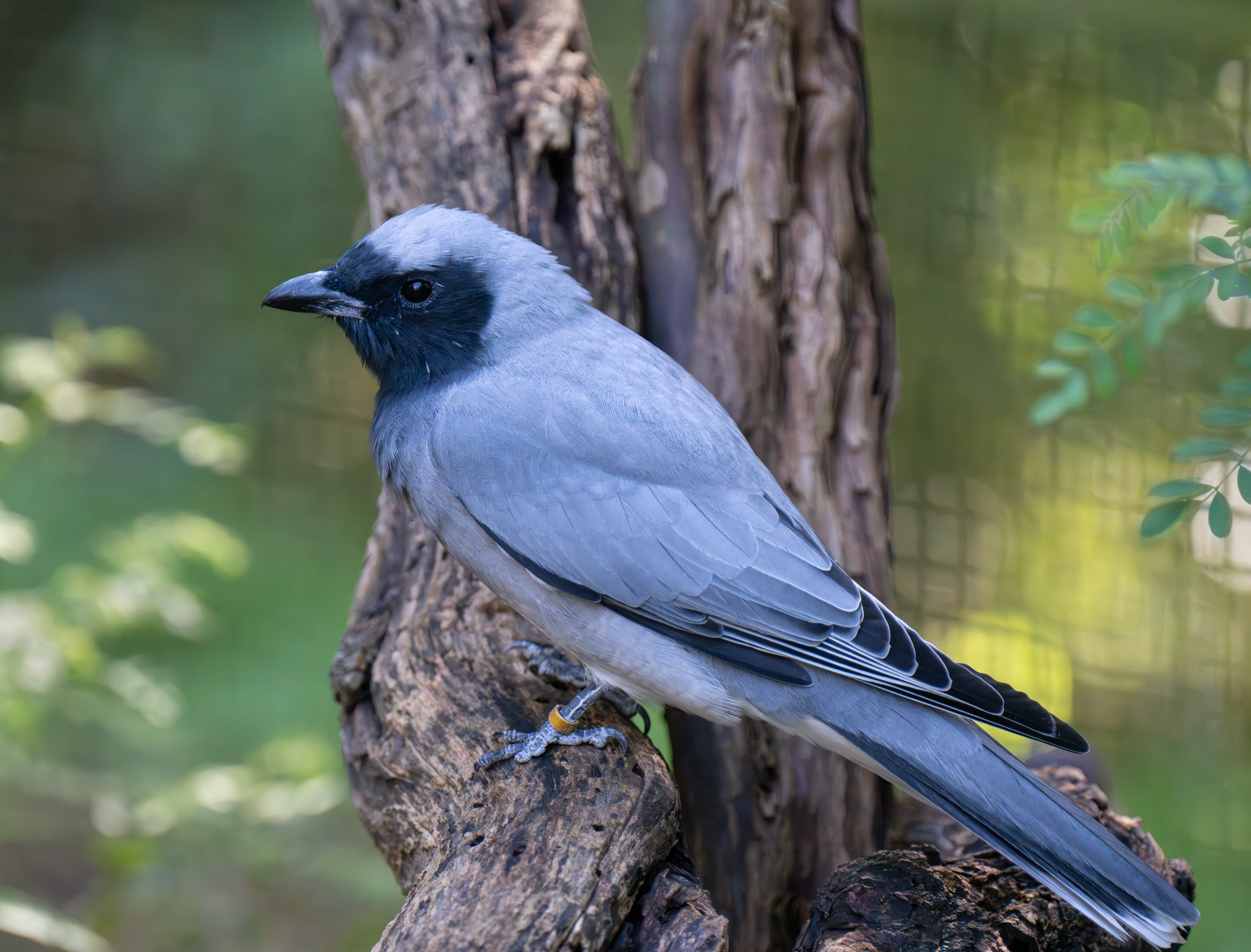 Black faced cuckoo shrike
Black faced cuckoo shrike 
A cuckoo shrike is neither a cuckoo, nor a shrike.
Read article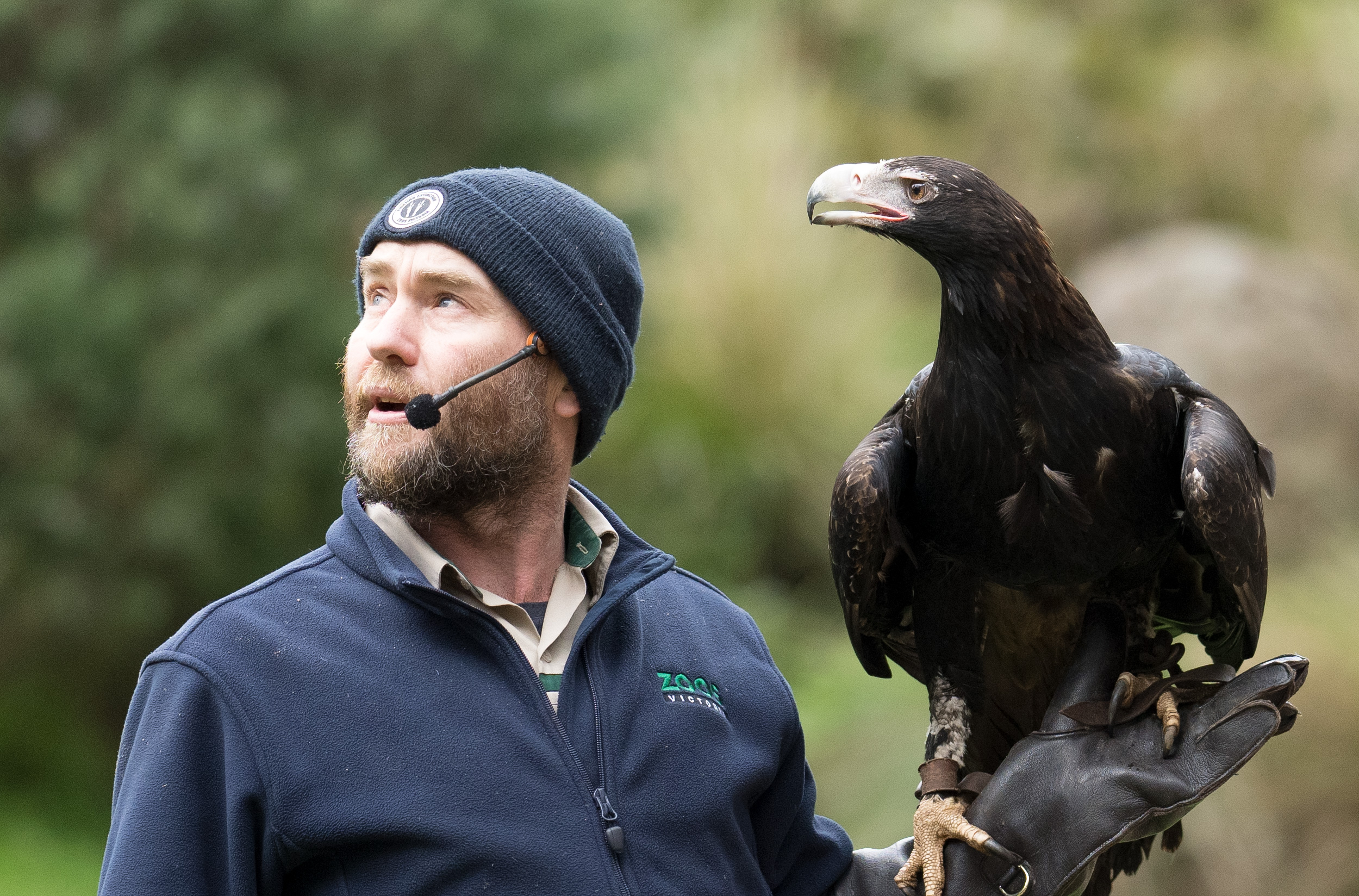 Eagle eyes - what is she looking at?
Eagle eyes - what is she looking at? 
This eagle really can see things that you can't.
Read article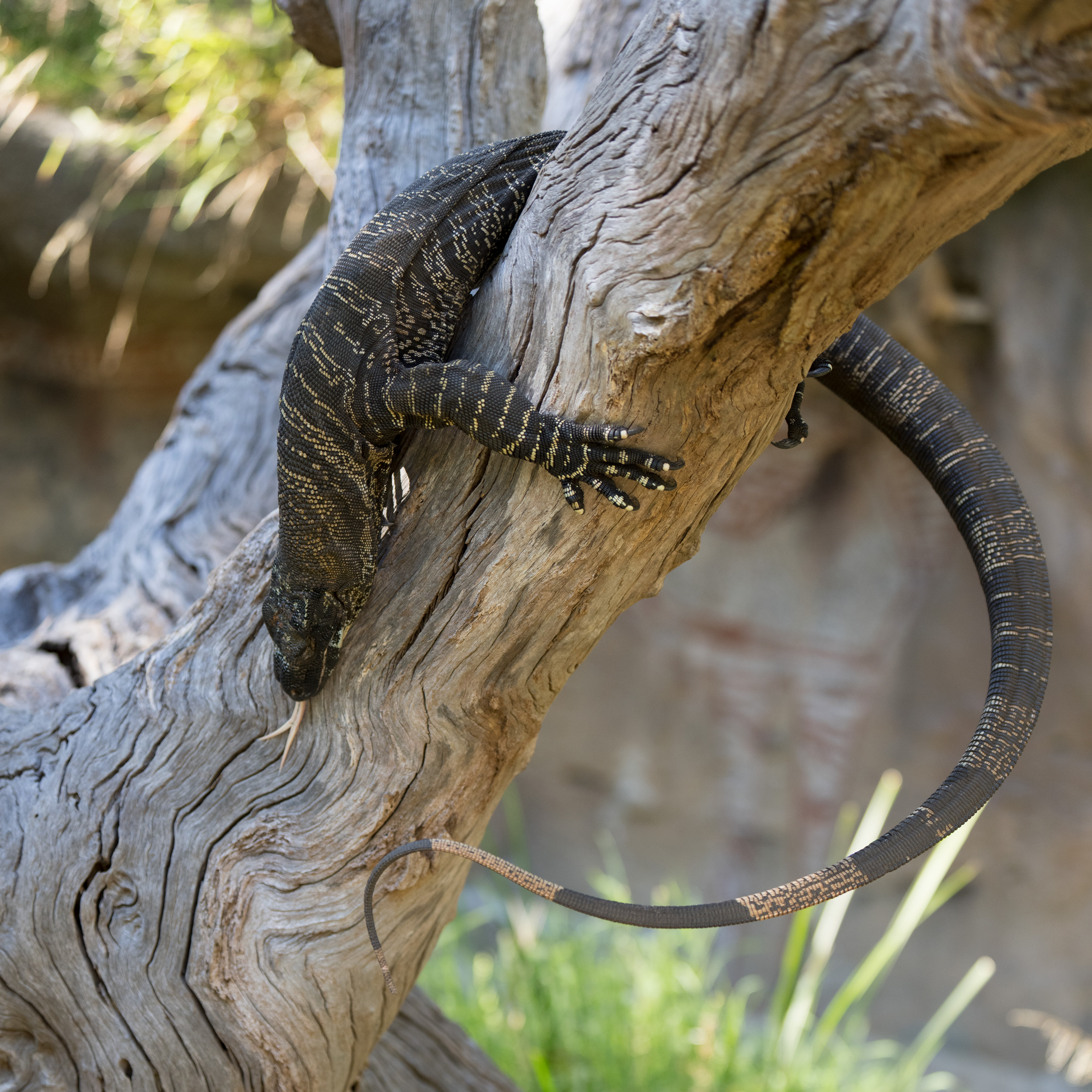 Go, go, goanna!
Go, go, goanna! 
A goanna may be a lizard, but a lot bigger than most lizards.
Read article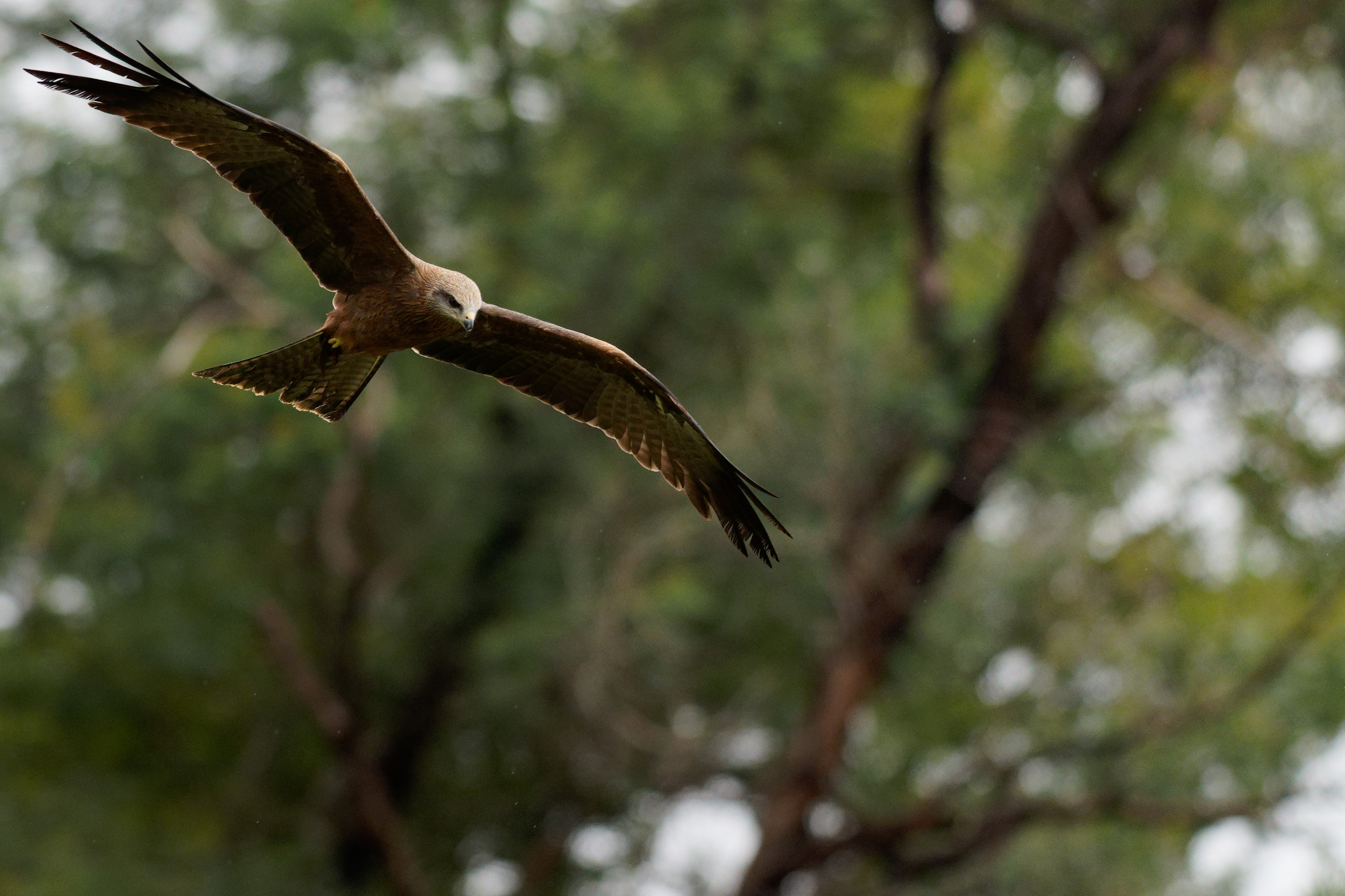 Eyes on target: black kite
Eyes on target: black kite 
Head horizontal, no matter what angle his body and wings are at
Read article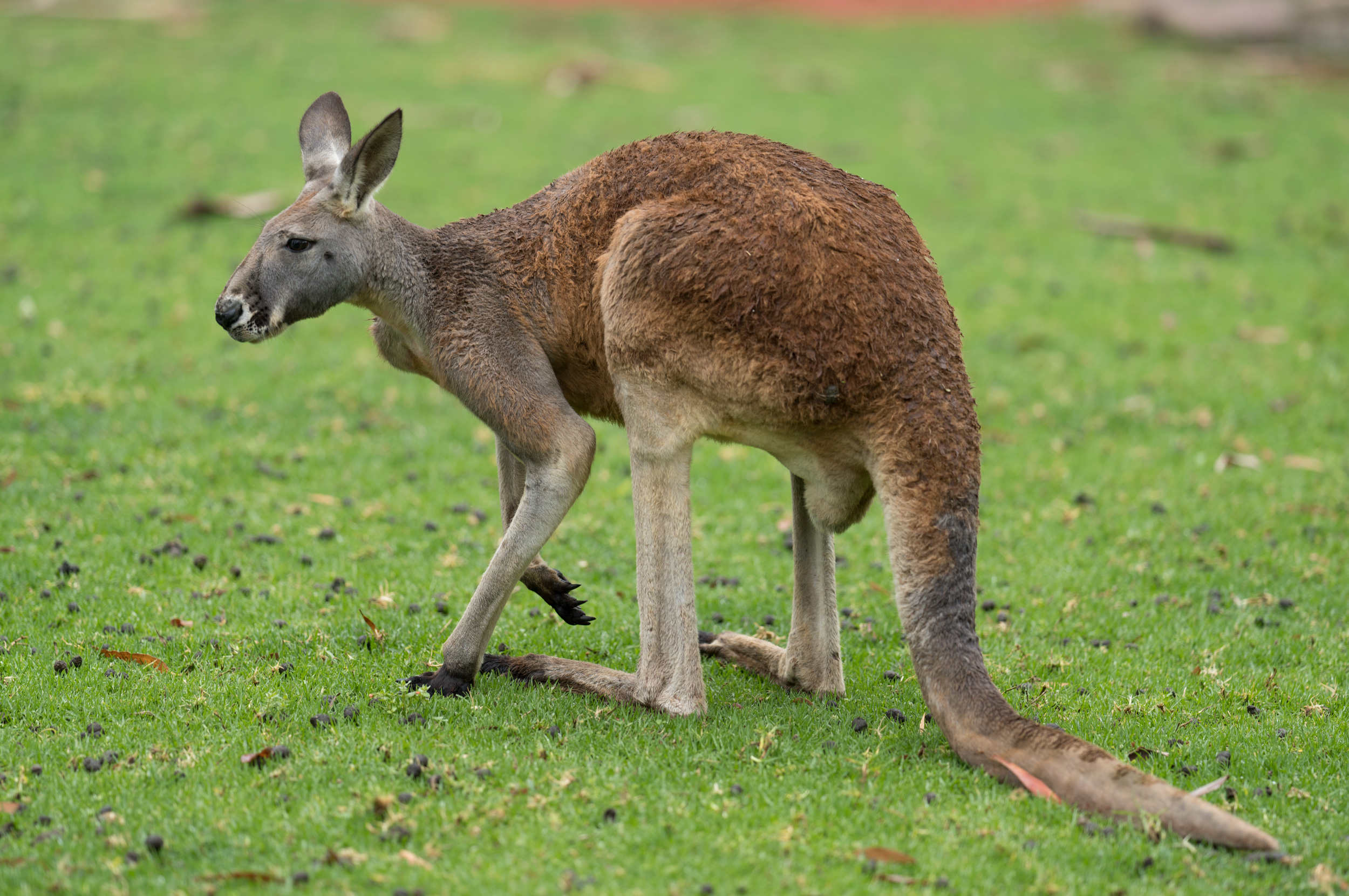 Red Roo Rained-on and Rumpled
Red Roo Rained-on and Rumpled 
After morning rain, this red kangaroo can't do a thing with his fur. Still, it shows up his red colouring better than when he is dry.
Read article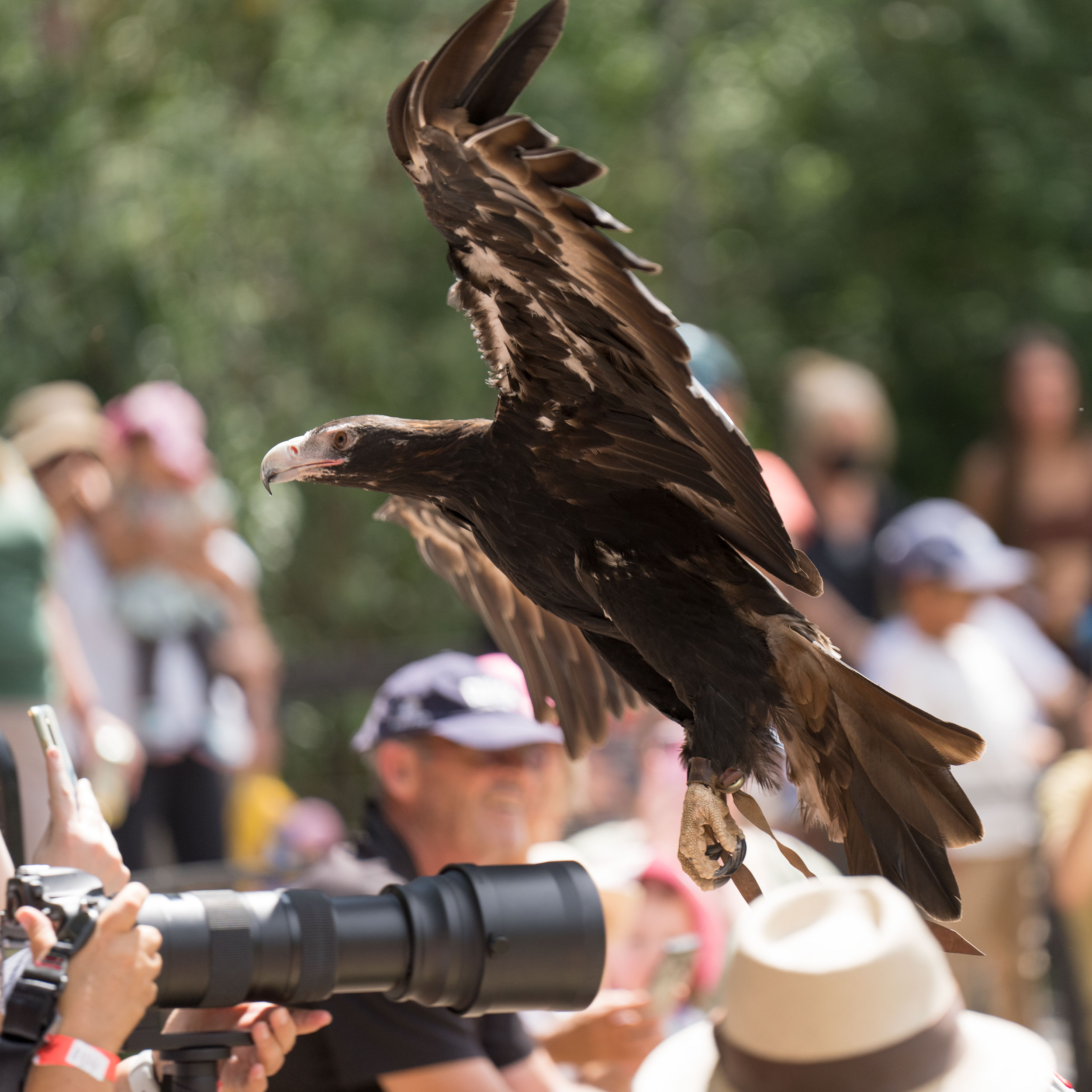 A bit too much glass for the shot
A bit too much glass for the shot 
A wedge tail eagle looks dangerous, even when she is scruffy!
Read article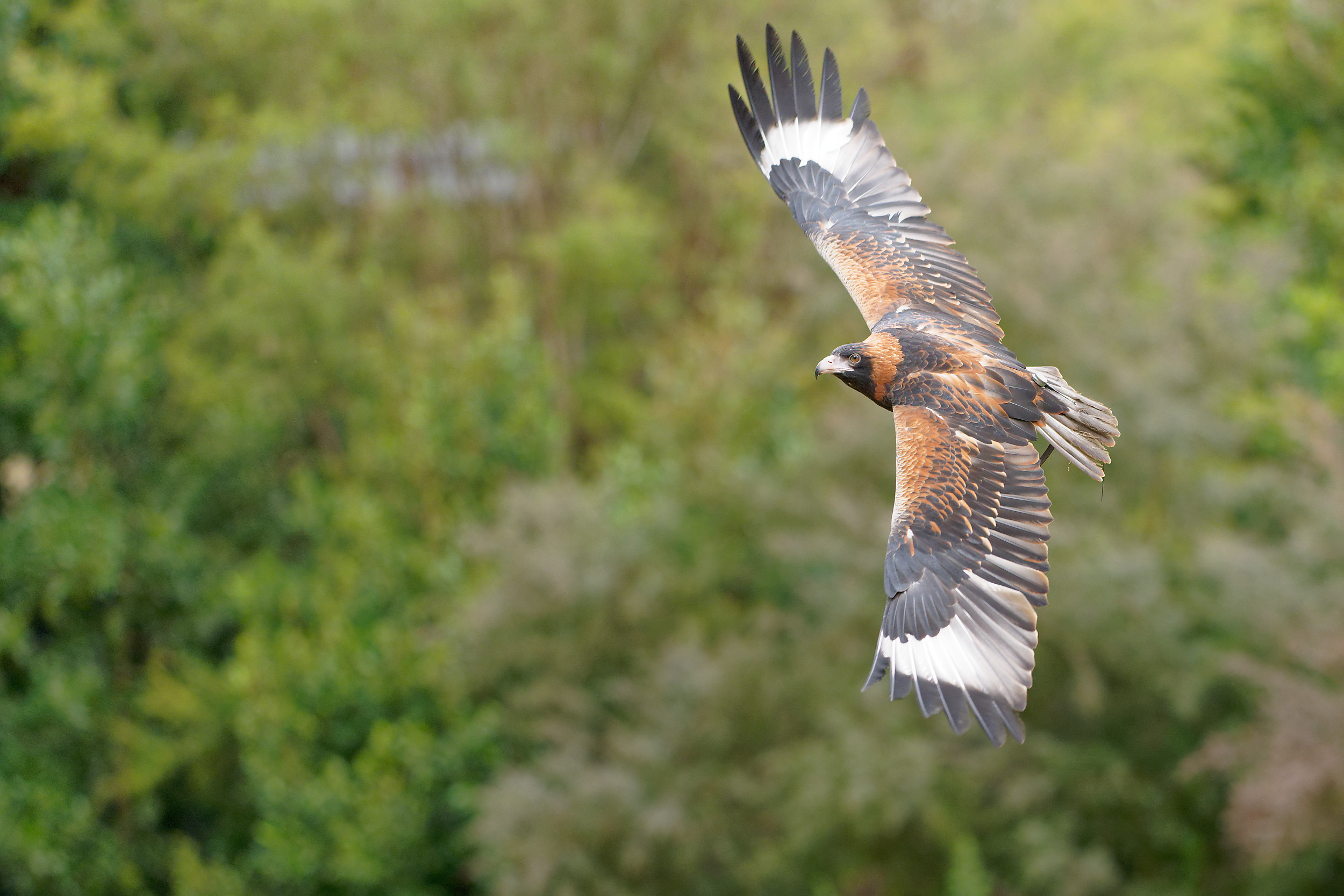 A black-breasted buzzard
A black-breasted buzzard 
Showing off her distinctive plumage, this black-breasted buzzard is naturally alliterative.
Read article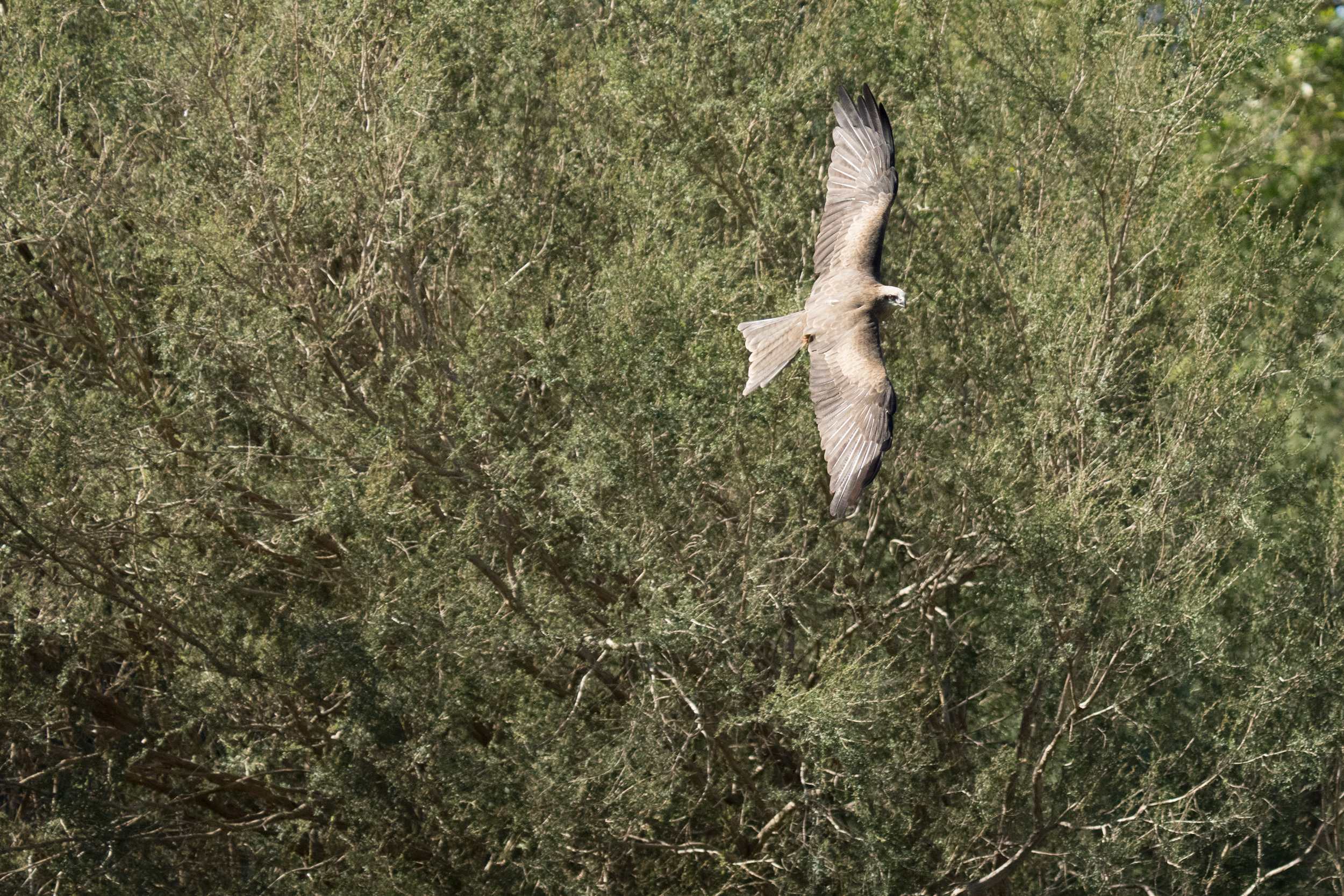 A Kilo of Kite Skiting in Flight
A Kilo of Kite Skiting in Flight 
A kite in flight, showing off how good he looks in the bright sunshine.
Read article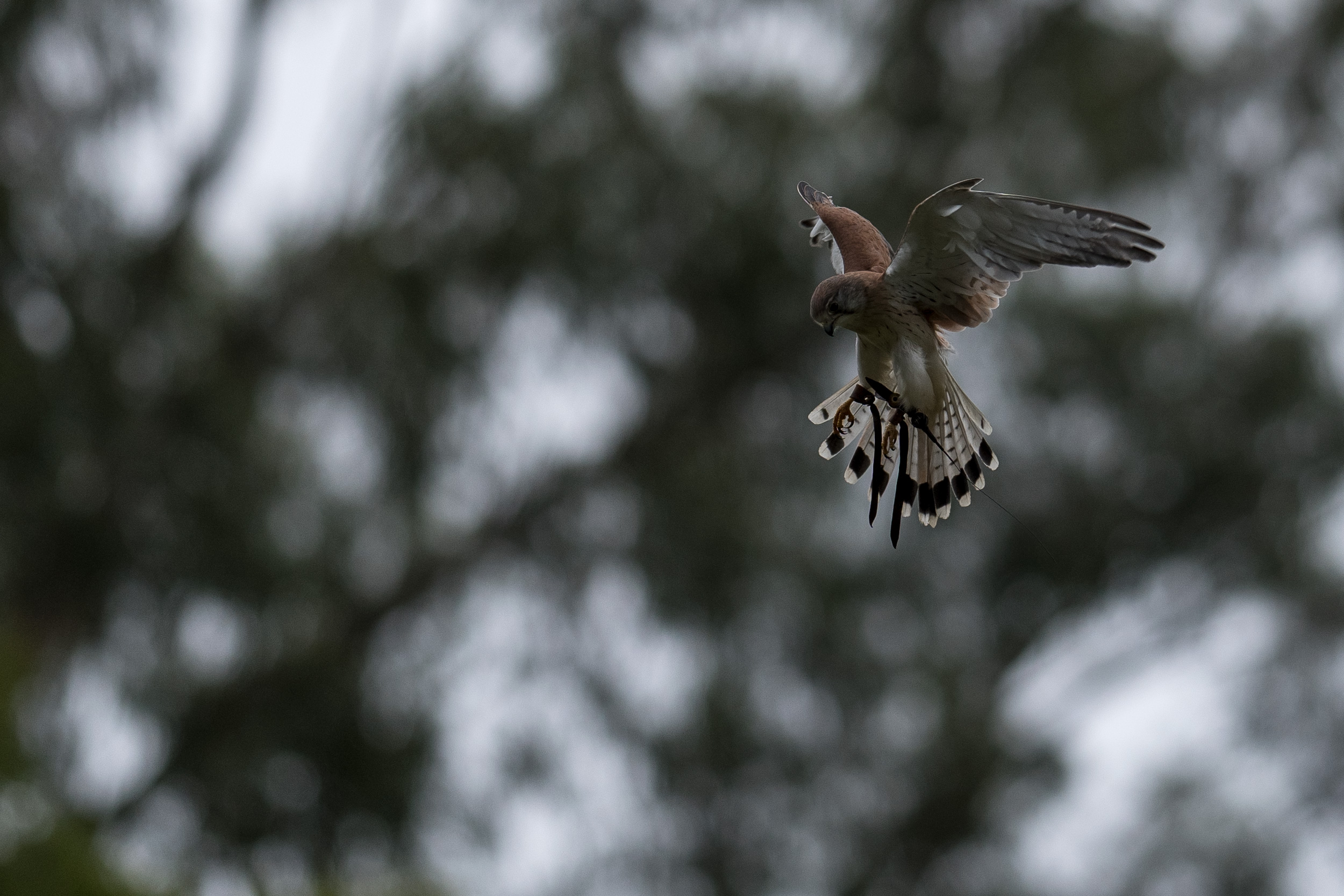 A nankeen kestrel can hover!
A nankeen kestrel can hover! 
A nankeen kestrel can hover above prey.
Read article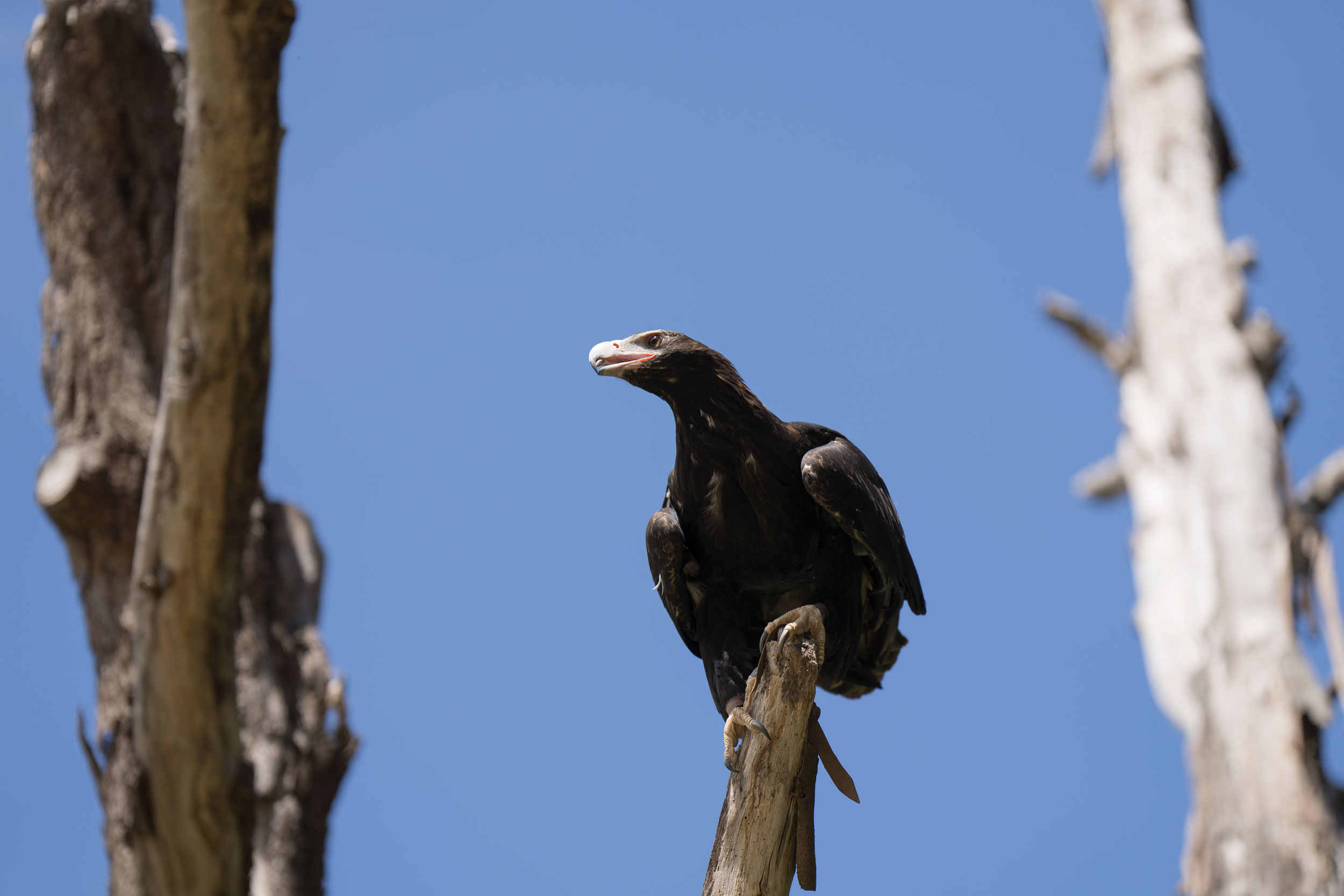 Australia's apex aerial predator still has to moult
Australia's apex aerial predator still has to moult 
A wedge tail eagle looks dangerous, even when she is scruffy!
Read article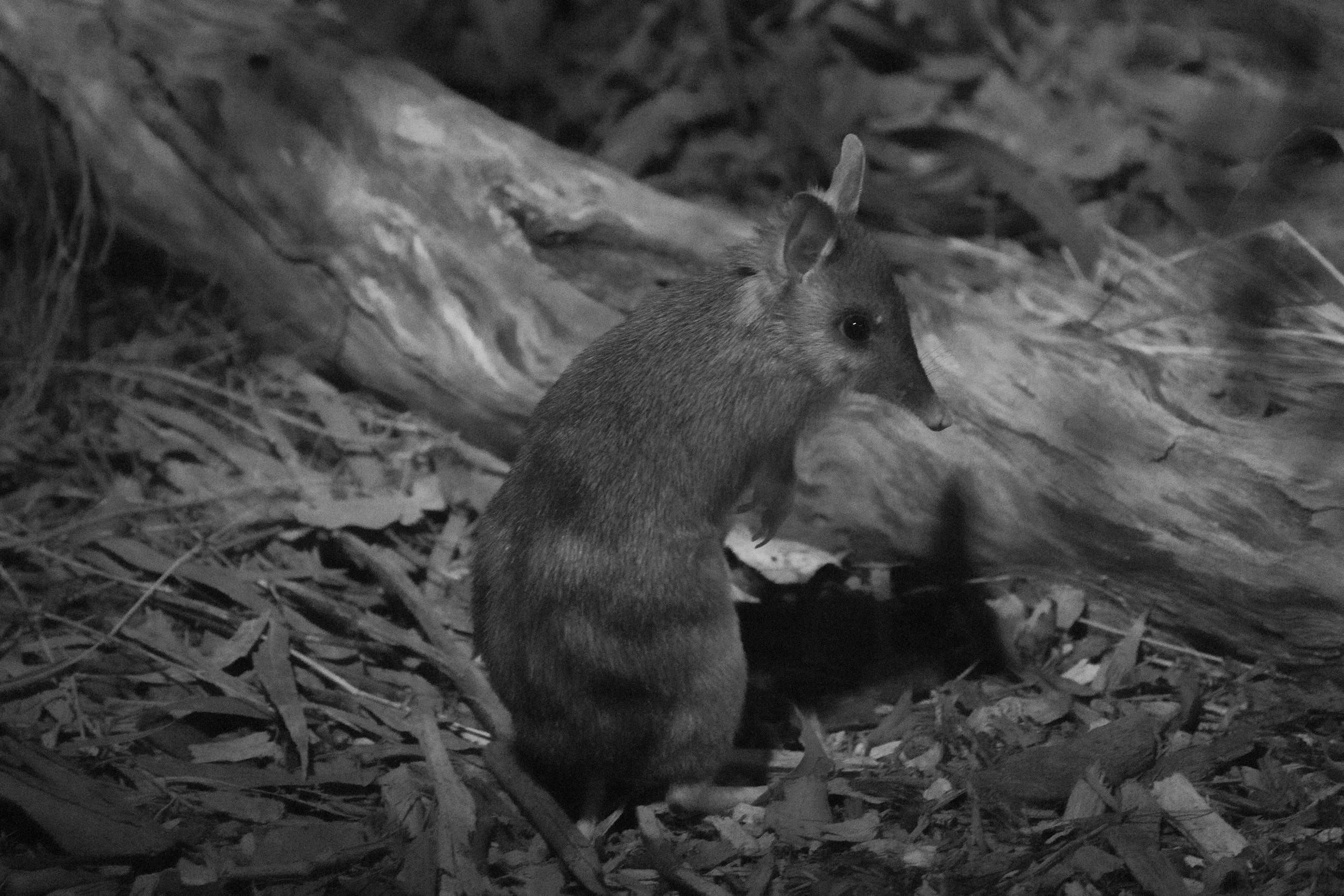 Black-and-white Bandicoot Because of Bedtime
Black-and-white Bandicoot Because of Bedtime 
This bandicoot is shown in black and white because this was shot in the darkness of the nocturnal animals exhibit, and the only light was a dark red.
Read article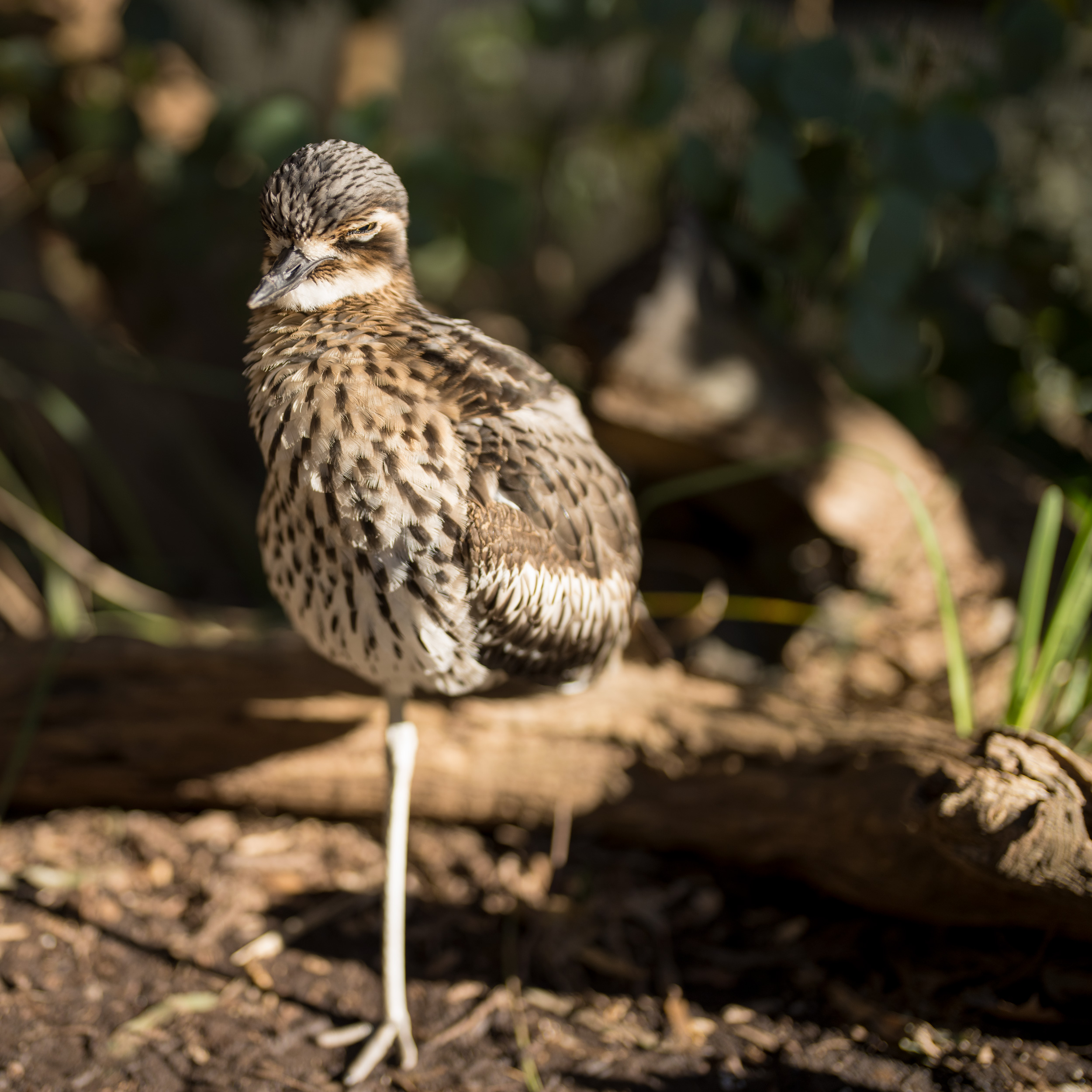 Bush Stone-curlew sleeping on one leg
Bush Stone-curlew sleeping on one leg 
A bush stone-curlew on one leg
Read article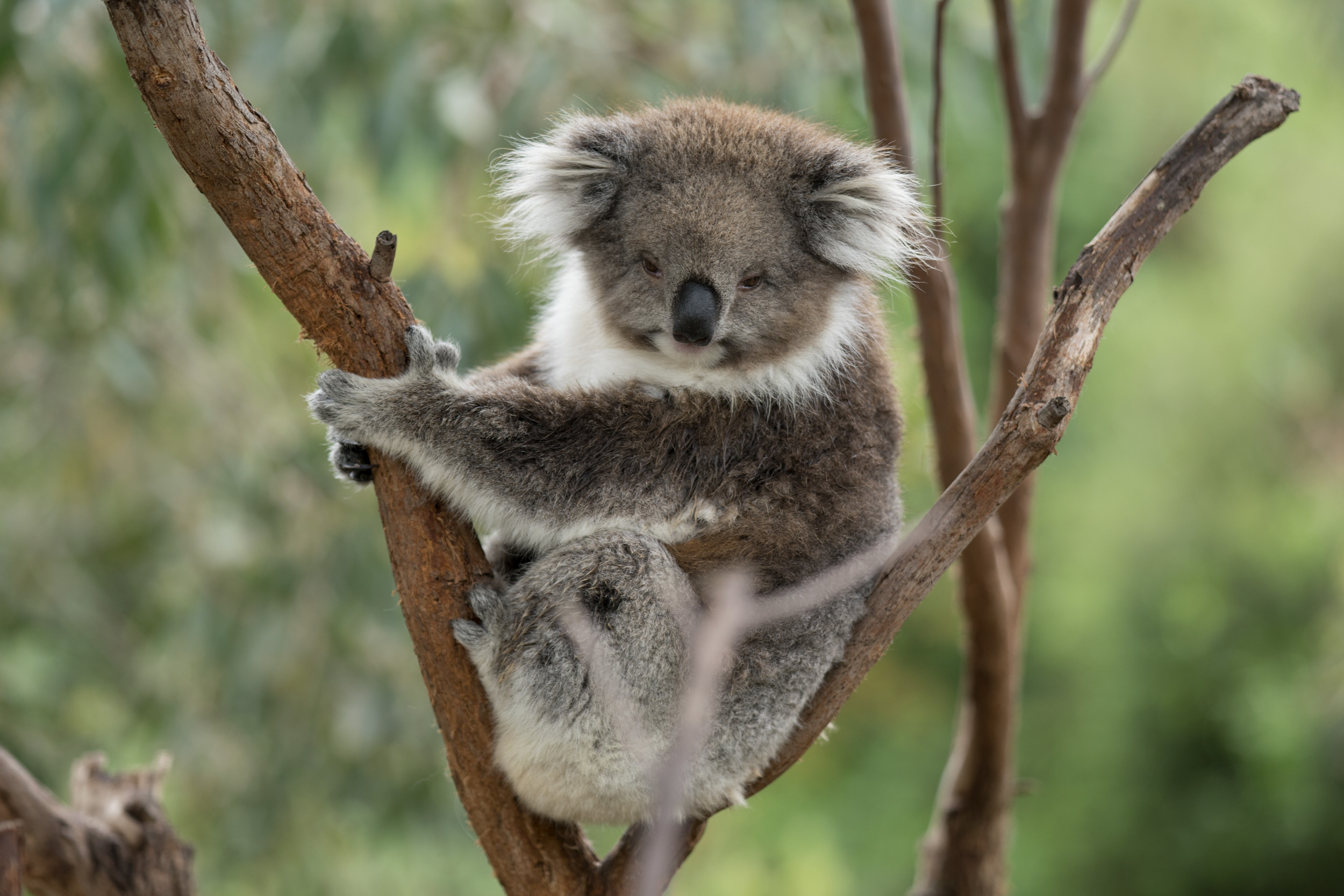 Catching a Contented Koala between Catnaps
Catching a Contented Koala between Catnaps 
Photographing koalas is easy. Unless you want to see their eyes open... Koalas sleep 18 to 22 hours a day.
Read article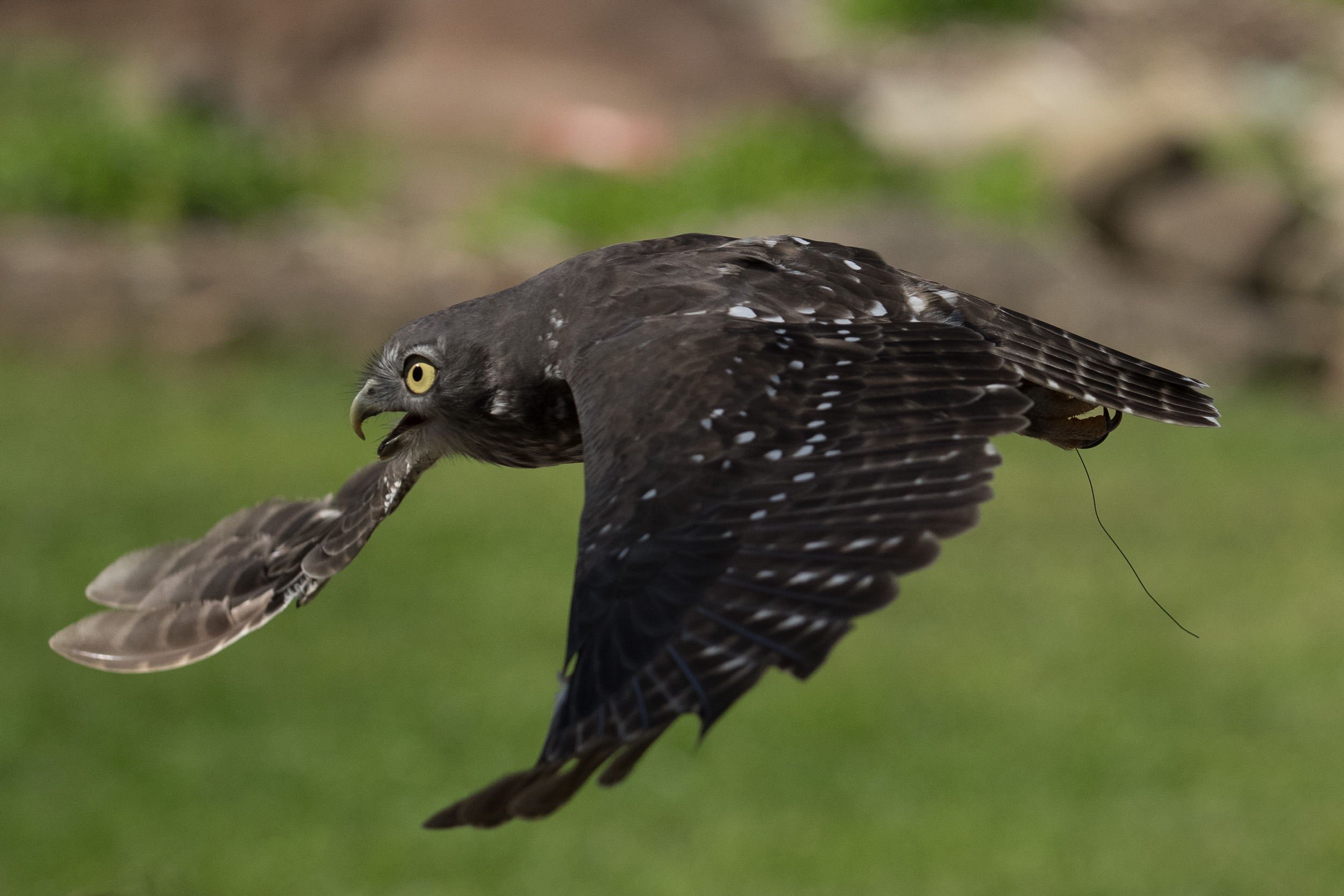 Eagle-owl Eager to Escape into Evening
Eagle-owl Eager to Escape into Evening 
Eagle-owl is ready to return to quarters to wait for nighttime.
Read article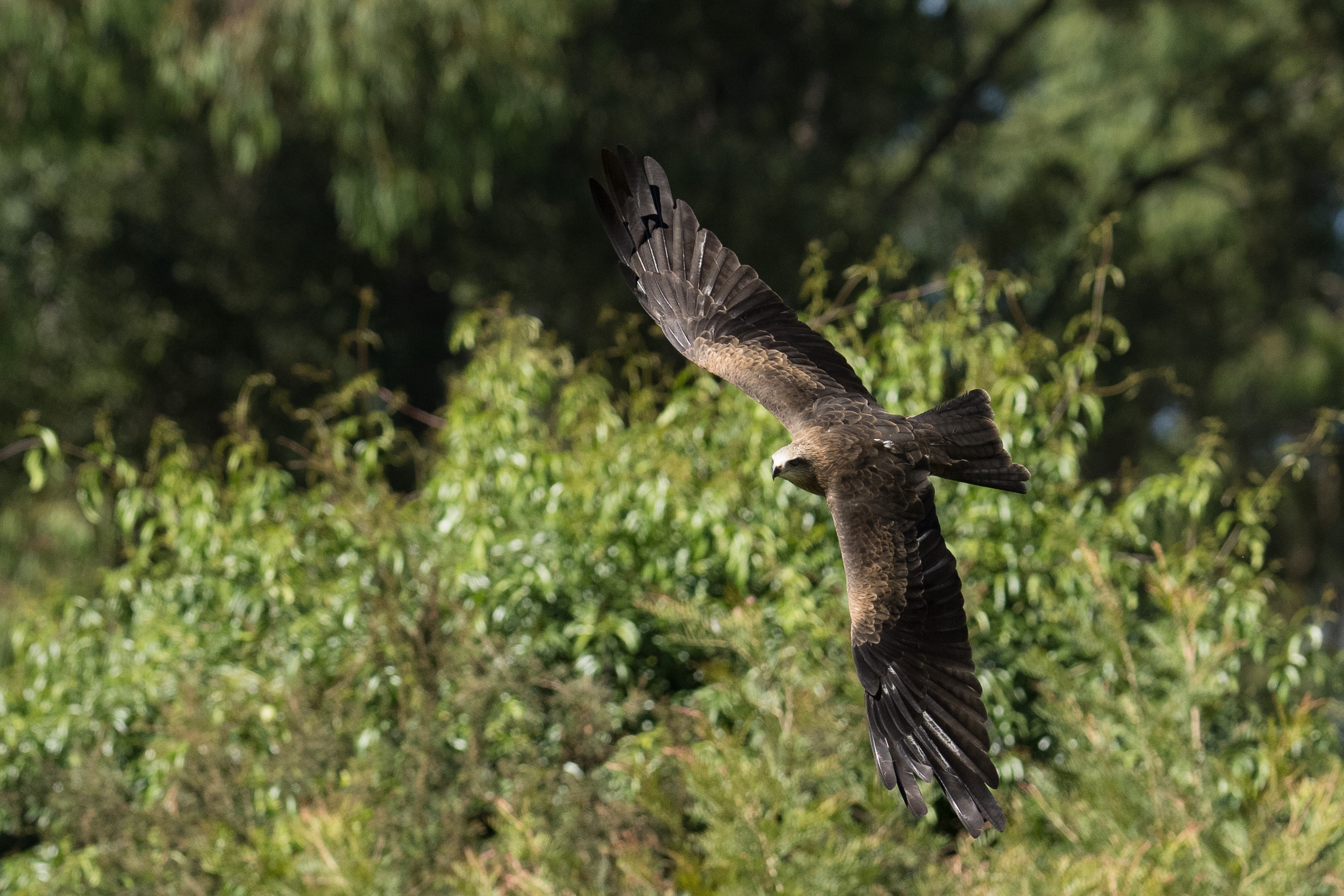 Keen-eyed Kite Keeping Black Beautiful
Keen-eyed Kite Keeping Black Beautiful 
The black kite soars, swerves and swoops, owning the air.
Read article Kestrel keeping kool
Kestrel keeping kool 
The nankeen kestrel is small, fast, and agile in the air. They are one of the few raptors who can hover.
Read article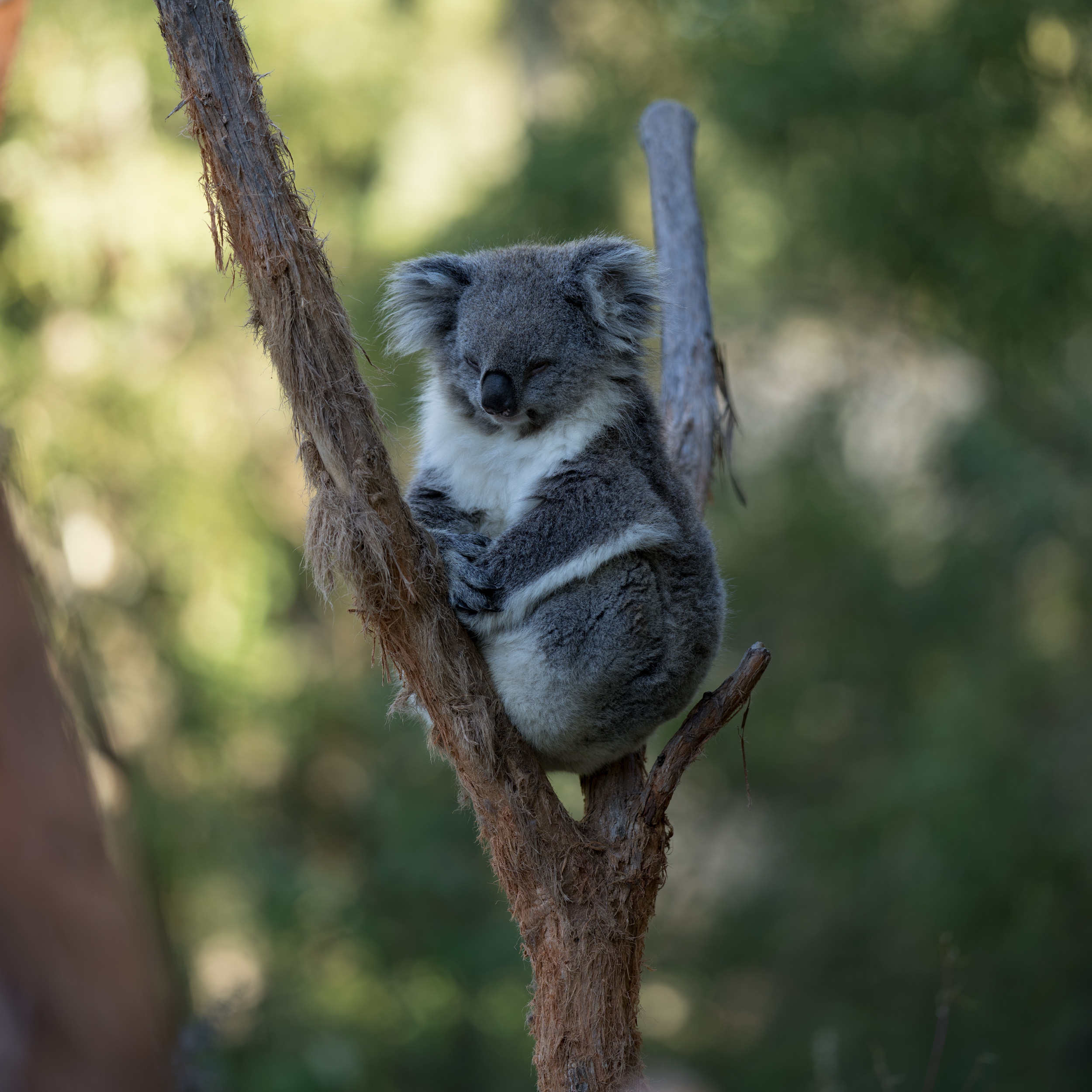 Koala caught with eyes not shut!
Koala caught with eyes not shut! 
A koala with eyes not entirely shut
Read article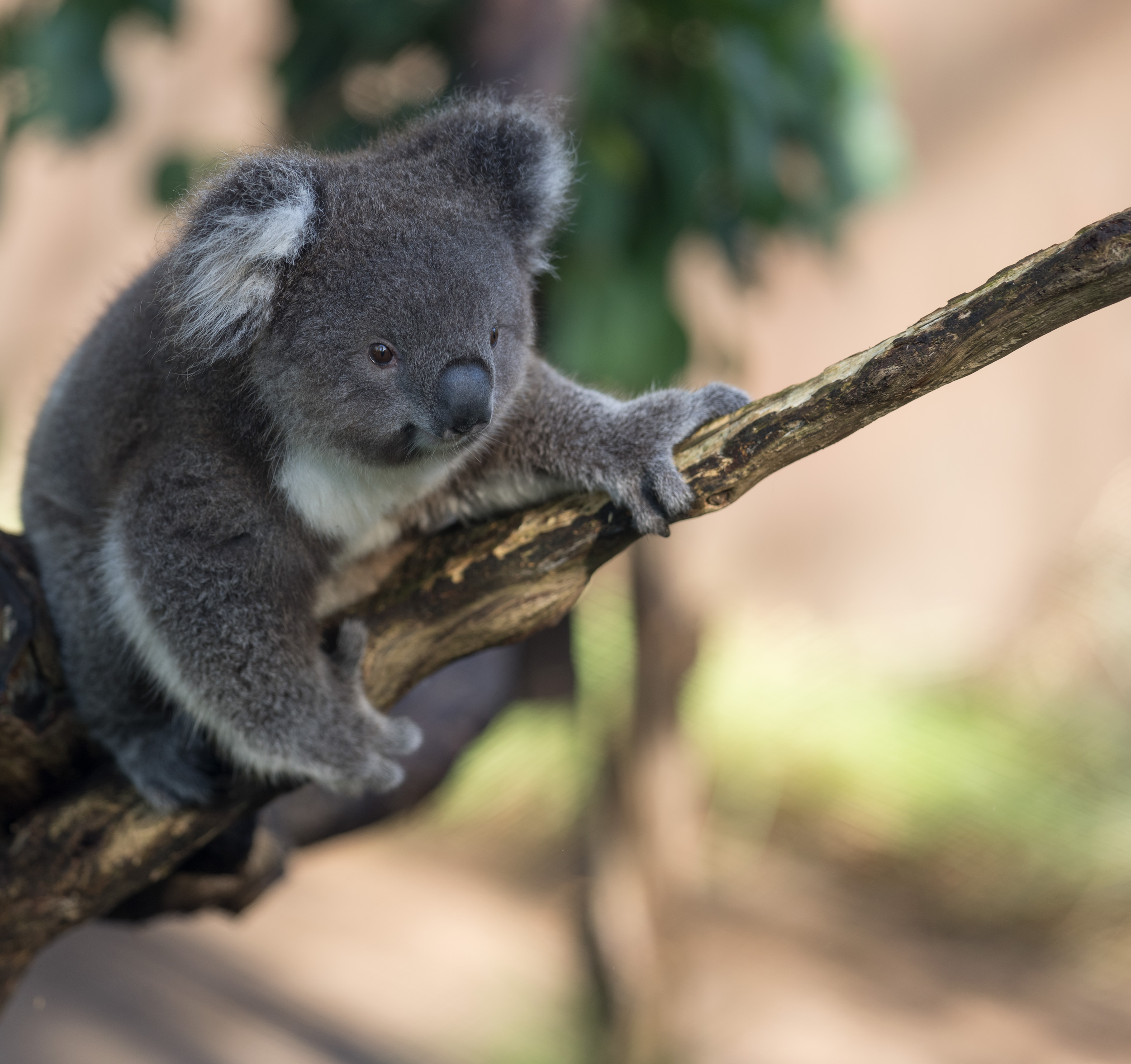 Koalas have two thumbs
Koalas have two thumbs 
A koala can give four thumbs up when they are really impressed.
Read article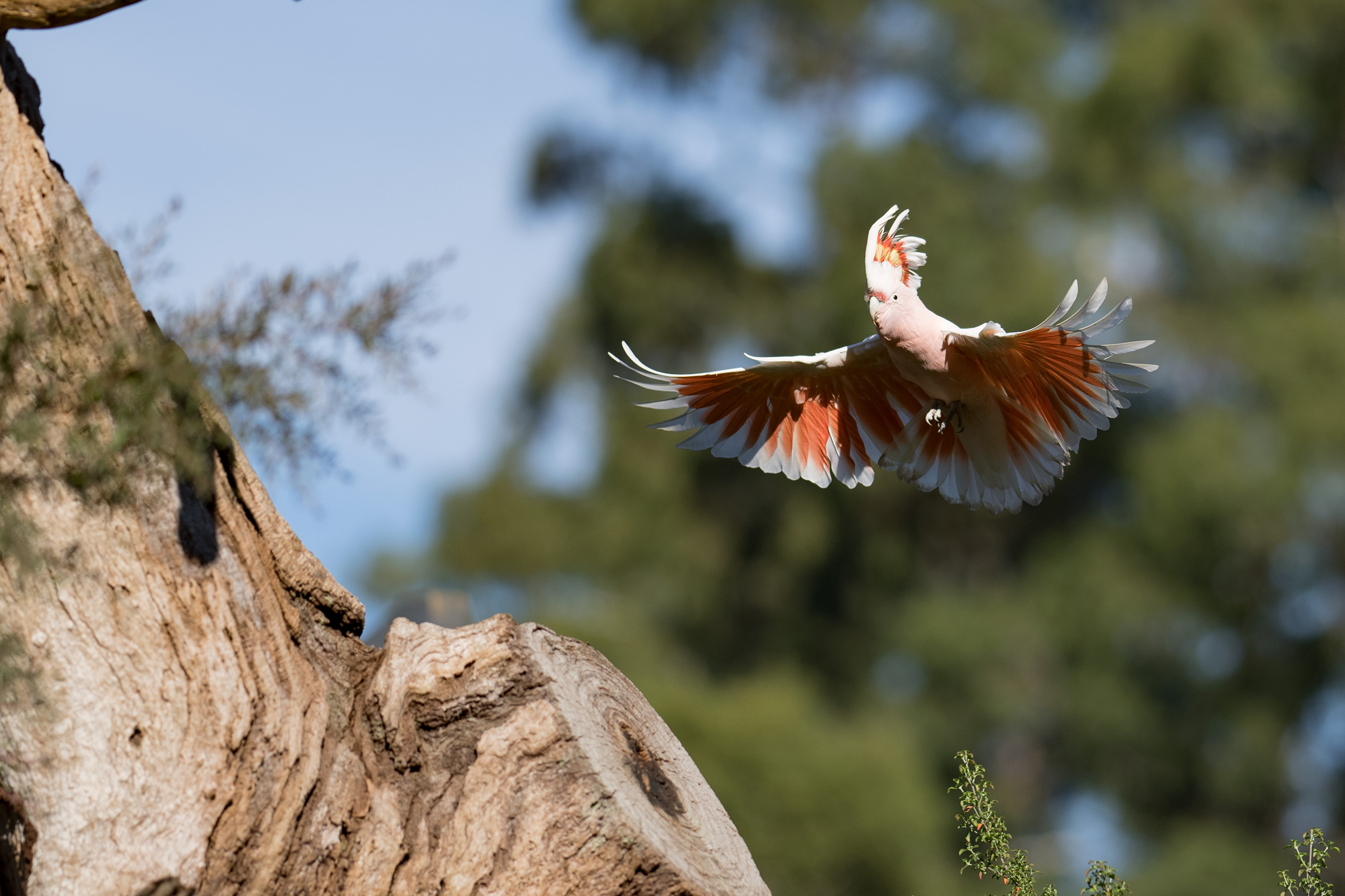 Major Mitchell Demonstrates Flare on Landing
Major Mitchell Demonstrates Flare on Landing 
A Major Mitchell cockatoo demonstrates flare on landing.
Read article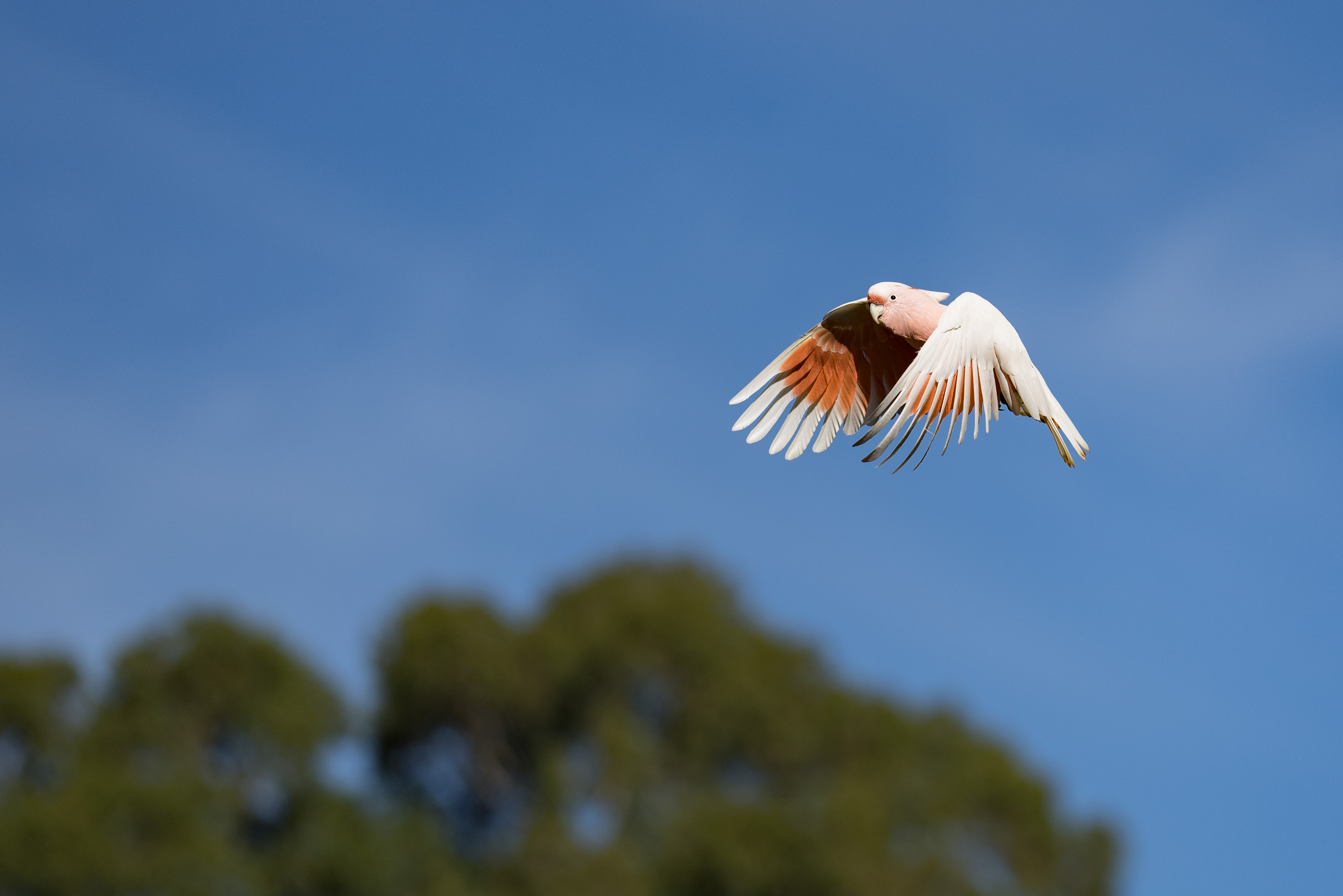 Major Mitchell is happy and up-beat
Major Mitchell is happy and up-beat 
A Major Mitchell cockatoo swivels feathers on the up-beat.
Read article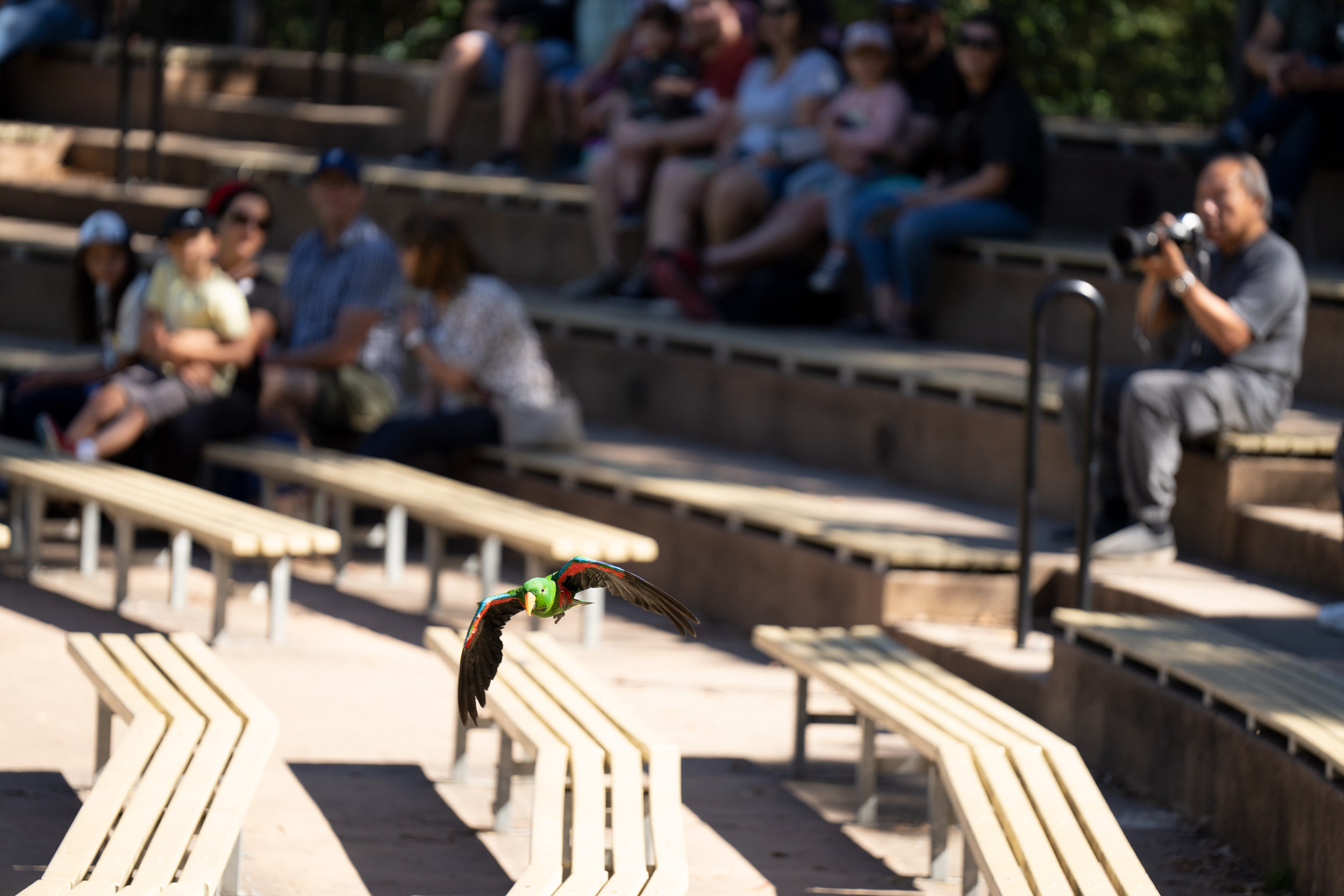 Nothing in focus?
Nothing in focus? 
Sometimes the details are important!
Read article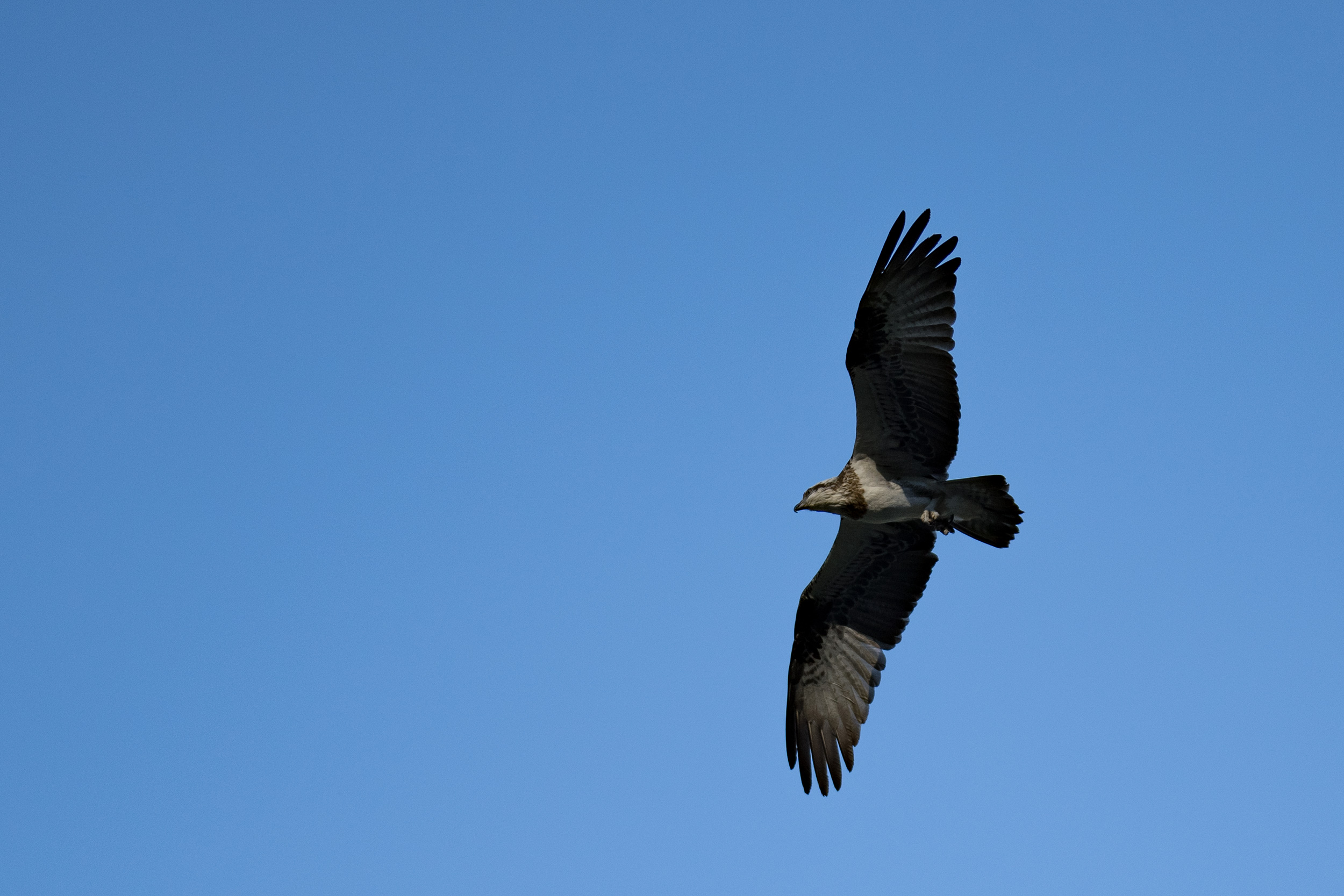 Osprey soaring
Osprey soaring 
A Major Mitchell cockatoo swivels feathers on the up-beat.
Read article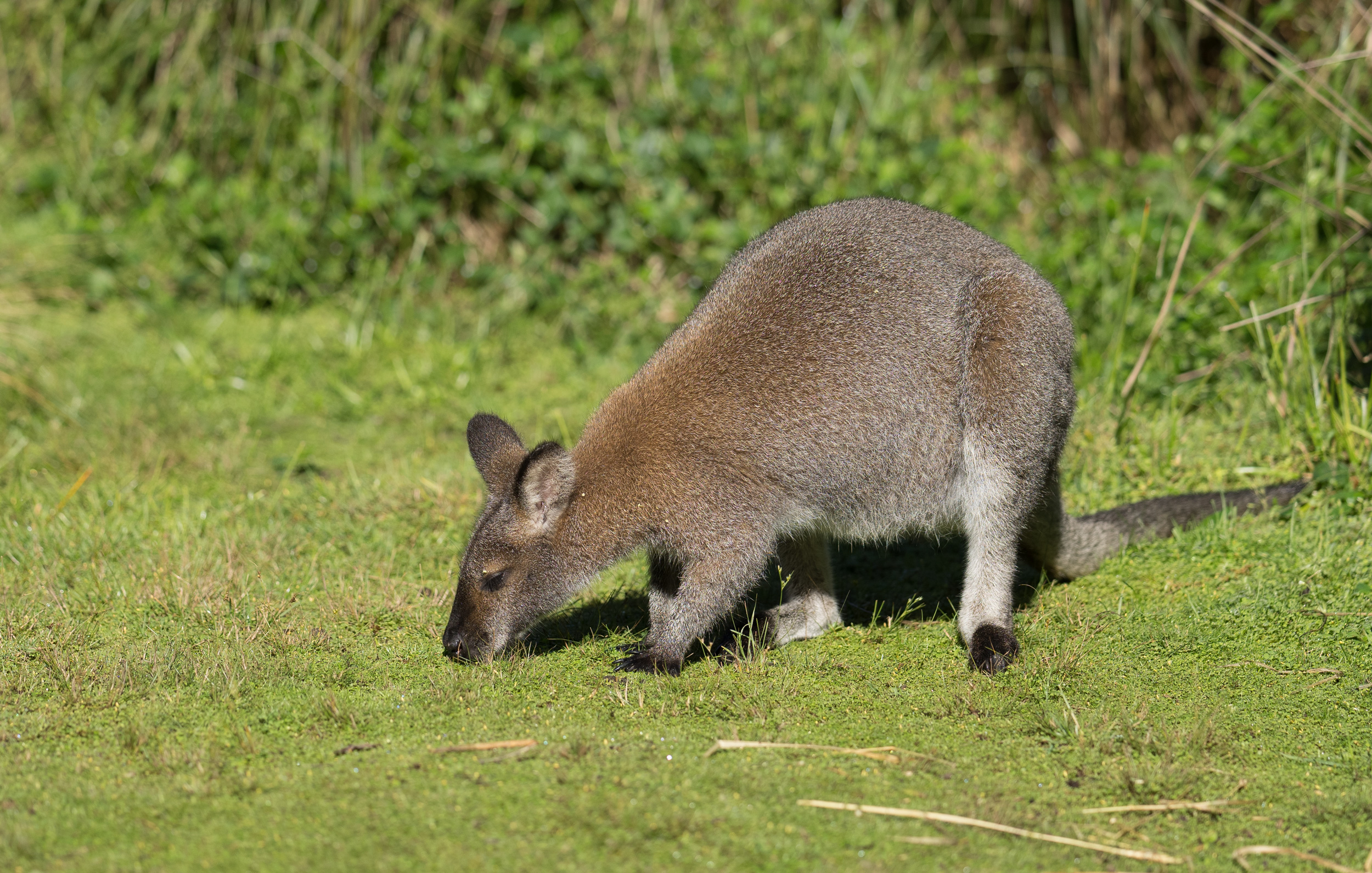 Rock-wallaby on the grass
Rock-wallaby on the grass 
Rock-wallabies don't have to be standing on solid rock.
Read article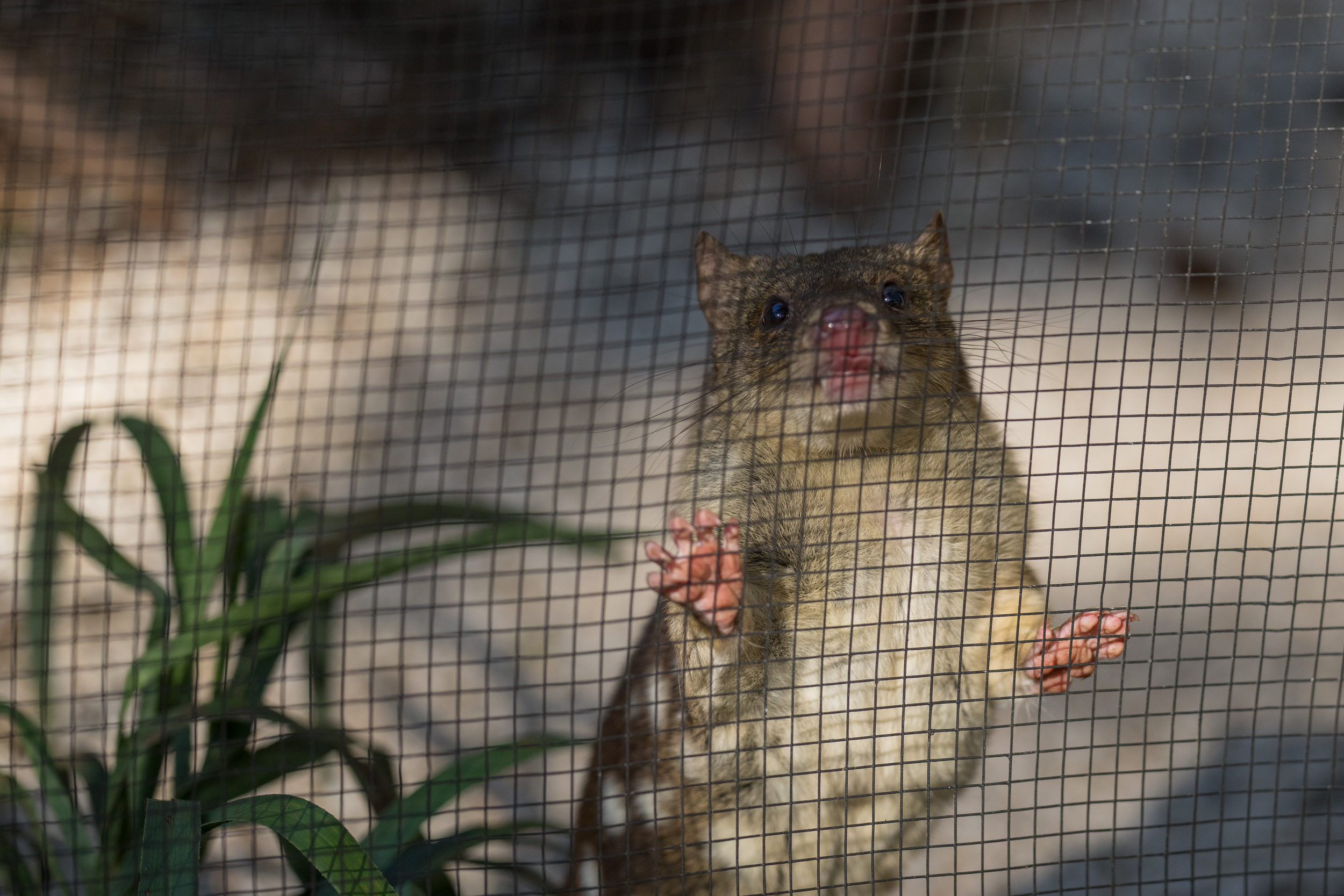 Spotted-tail Quoll - "I was framed!"
Spotted-tail Quoll - "I was framed!" 
This spotted-tail quoll is eager for brunch. We can see hand-like paws.
Read article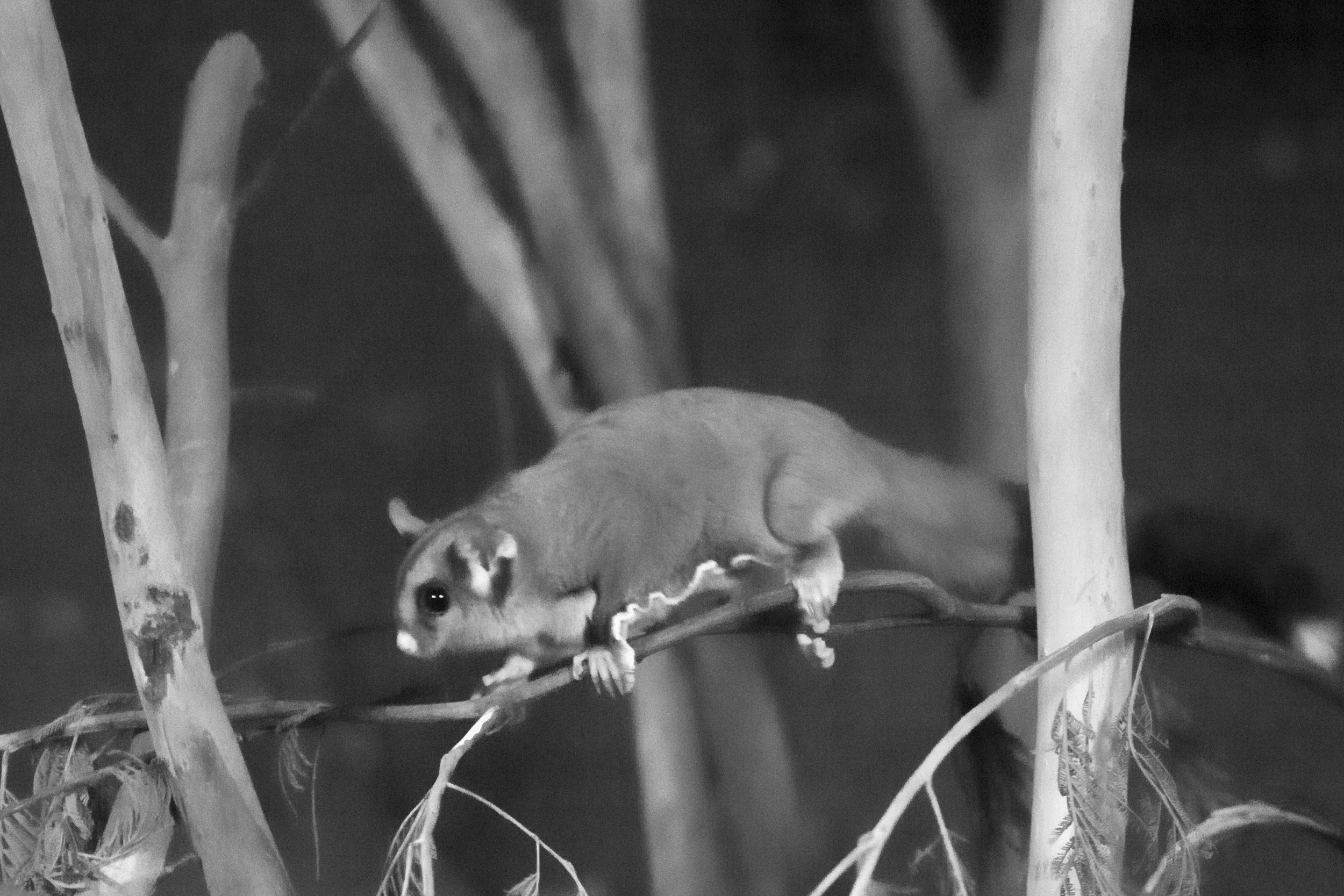 Sugar glider in the dark
Sugar glider in the dark 
A sugar glider (a marsupial flying possum who eats sap and nectar) photographed in extremely low light.
Read article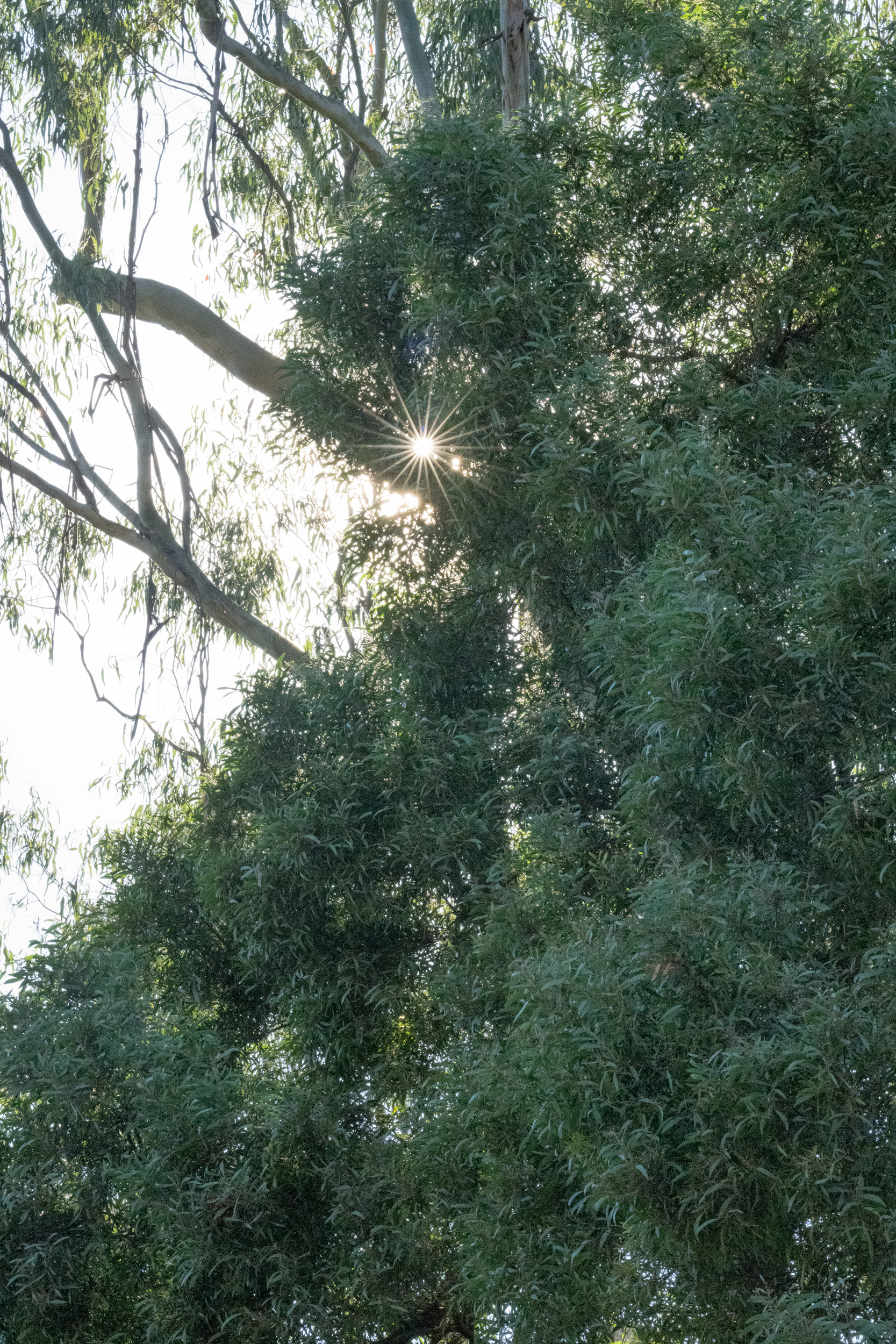 Sun star from the 135 GM - a dreadful example
Sun star from the 135 GM - a dreadful example 
Showing that the Sony 135mm f1.8 GM can shoot sun stars. It has 11 aperture blades, so we get 22 points on our sun stars.
Read article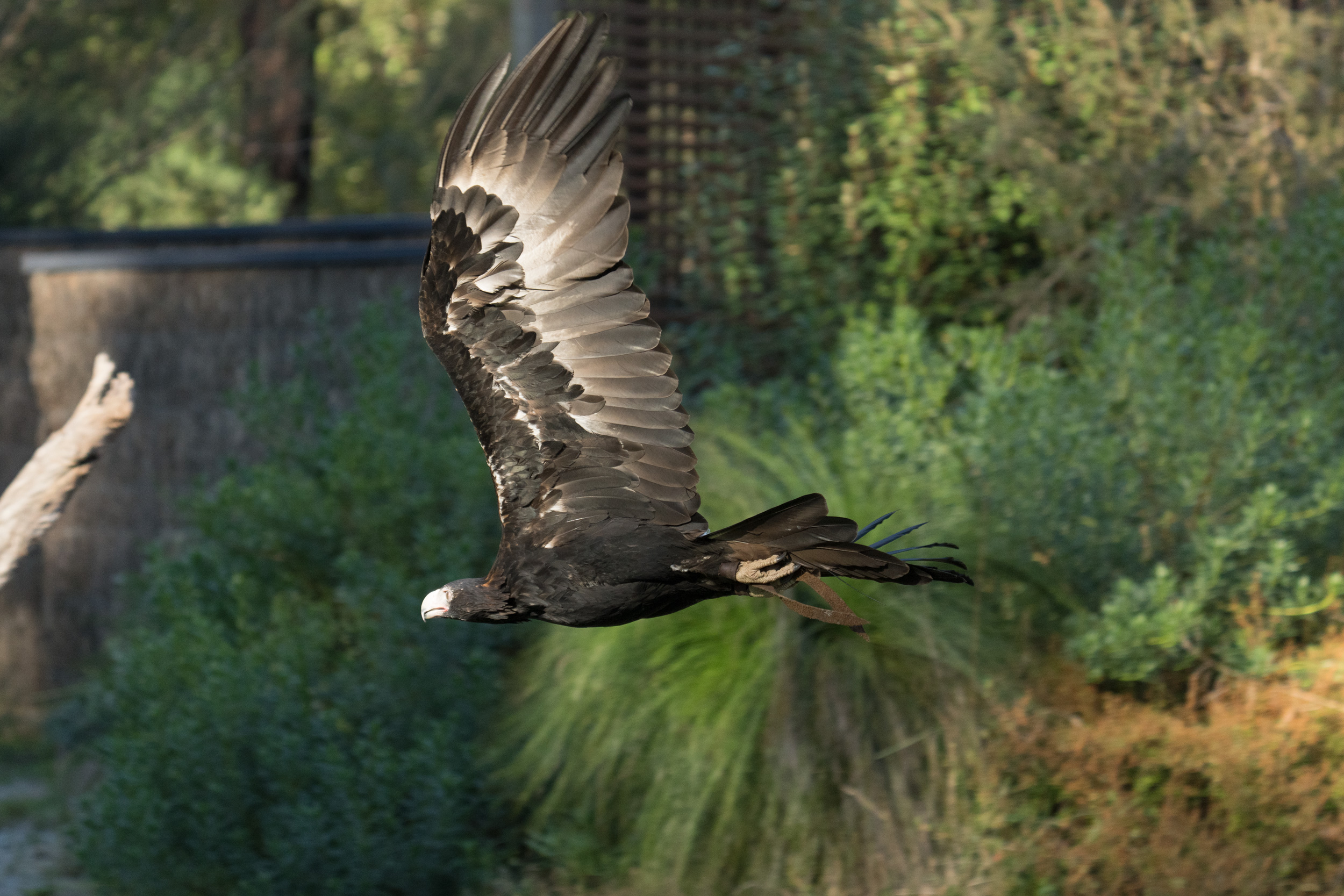 The Wonder of the Wedge-tailed Eagle
The Wonder of the Wedge-tailed Eagle 
Magra the wedge-tailed eagle is wonderful in flight, as long as you aren't her prey.
Read article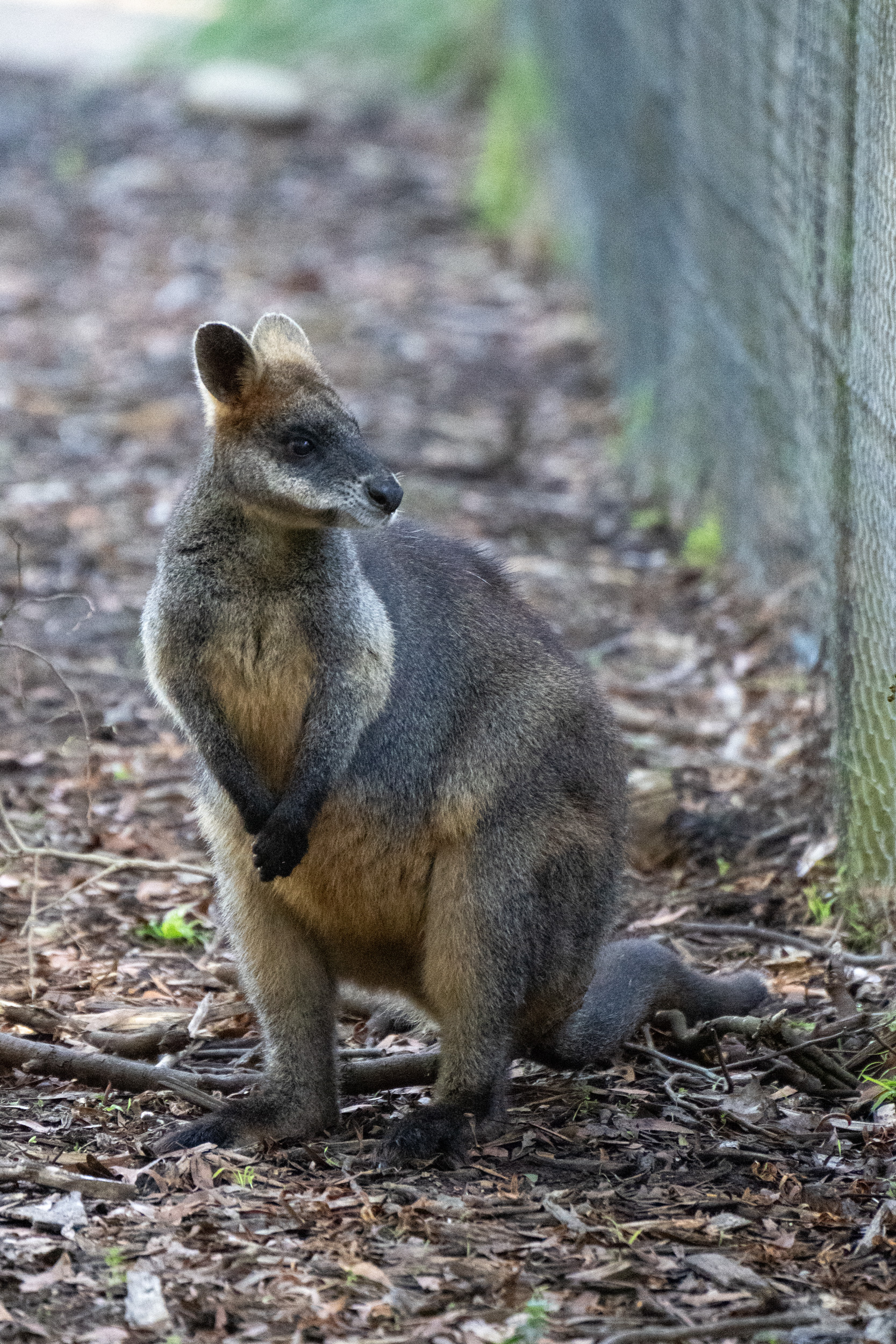 What kind of music does this wallaby like?
What kind of music does this wallaby like? 
A rock wallaby at rest
Read article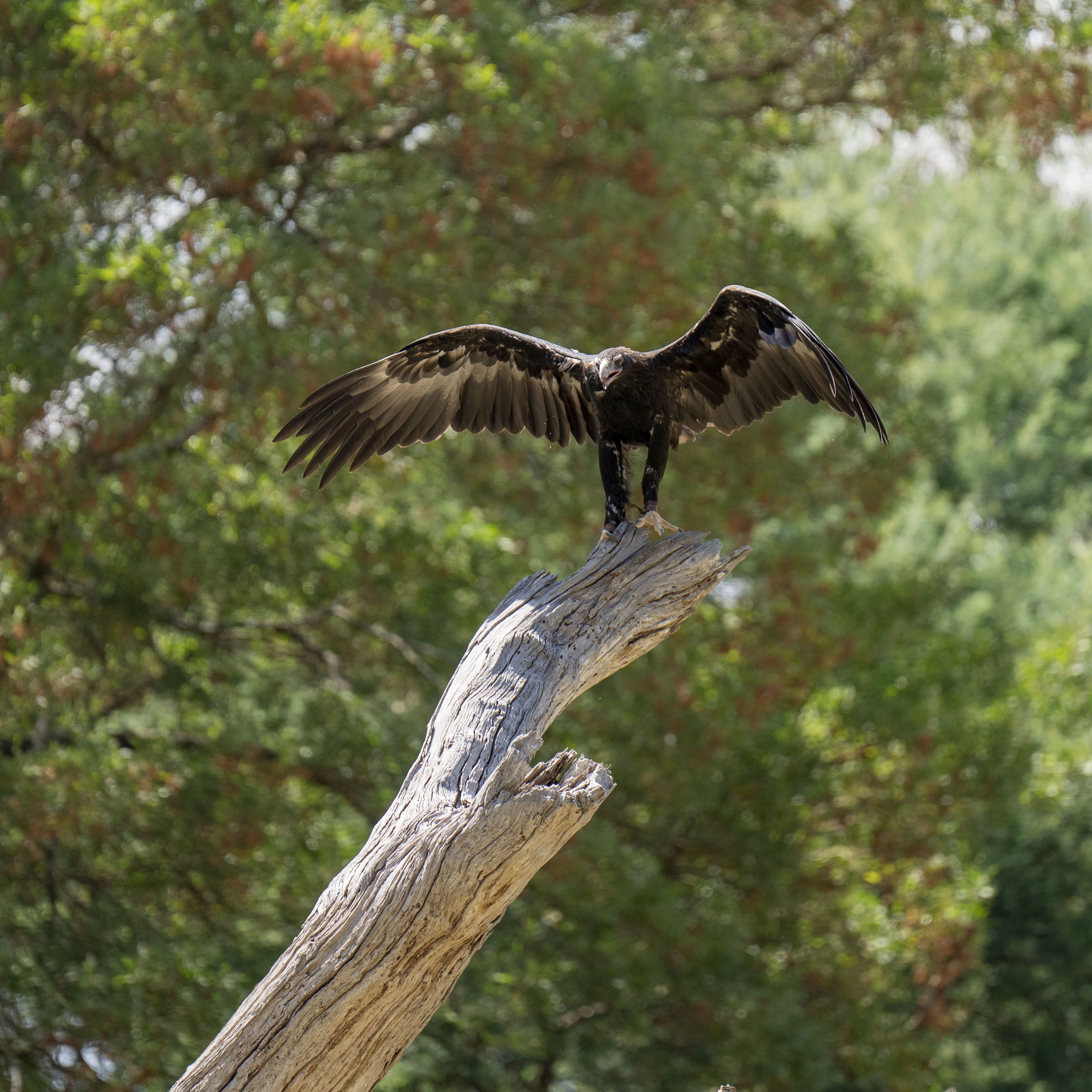 What can you do with a whole bunch of images from a burst?
What can you do with a whole bunch of images from a burst? 
What can you do with a burst of images?
Read article